Here is a timeline summary.
1957 Bill Courtney failed his 11+ exam and went to a secondary modern school where pupils were not expected to progress to university. On paper, this was a blow to his intellectual development because he never mastered the trick of blindly repeating what he had been taught in order to pass exams.
Consequently, by university academic standards, he matured into a weak performer, only gaining a lower second class honours degree in Applied Physics and being denied entry to a PhD course.
However, in terms of having original insights, his 11+ exam failure allowed him to ‘punch above his academic weight’ because he had not been grammar school conditioned to blindly accepting textbook knowledge as being irrefutably true.
Two of his classmates, Kevin Roberts and Andrew Ciesielski experienced this mixed blessing of being 11+ failures. They shared his cutiosity about science and must be creided with encouraging his limited talents to bloom
1962 President Kennedy makes a well received speech at Rice University that surprises 16 year old Bill because it seems to be illogical. Kennedy argues in favour of going to the moon, ‘Not because it is easy, but because it is hard.’ Bill adopts this dubious argument as an internal rallying call to himself.
1964 He breaks with council estate, secondary modern school and family tradition by studying Applied Physics at Hull University. [He had originally planned to study engineering at Queen Mary University, but due to a heart condition, ended up at Hull University instead.]
He soon realises that Kennedy had been very clever because he had tapped into scientific hubris. During his time at Hull University, Bill identifies a very simple and environmentally friendly way of generating electricity. But neither his tutor nor his more academically educated fellow students were impressed.
Bill concludes that scientists prefer difficult science with complete answers just beyond their current reach, because this creates research opportunities and allows scientists to replace religious leaders as the guardians of the mysteries of existence. British politician Harold Wilson calls for ‘White-hot technology’ offer with nuclear fission and fusion being seen as the way to a secure energy secure future.
1965 Bill Courtney realises that since Victorian times, meteorologists have been interpreting the laws of thermodynamics correctly, but that engineers have a blind spot in their vision. He argues that if engineers were prepared to learn from meteorologists, they could invent new ways of generating cheap clean electricity.
For the next 59 years, his arguments are dismissed and sometimes ridiculed by the ‘experts’.
1968 His free thinking skills work against him because he is unable/unwilling to regurgitate what he has been taught. He fails to get an Upper Second Class degree and is unable to progress as a PhD student. [Bill’s PhD dream had been to invent a spinning process for casting astronomical telescope mirrors, based on the float glass process that had recently been invented in Britain, not inventing power generators!]
1985 During an Alpine holiday he sees the evidence that human-made climate change is melting the Alpine glaciers. He has an epiphany on experiencing a warm Foehn wind, while crossing the Bionnassay glacier, realising that cool running heat engines could provide a solution to the glacier melting problem. But he feels impotent to act because of the prejudice against his assertion that engineers have made a thermodynamics interpretation mistake.
In 1986 he invents a new crash protection mechanism, Shock Absorbing Liquid, SALi.
This invention gets a far more positive response during informal discussions with experts.
So he decides to develop SALi as a cash cow to finance future heat engine research.
His vision is to become recognised as an innovative crash protection inventor by the year 2000 and then use his status and earnings to champion cool running heat engines.
1993 Courtney files his fist patent relating to cool running heat engines, GB 2273133.
1996 After living frugally for ten years to build up his funds, he enrols as a mature engineering student at Manchester University. His aim is to gain a Doctor of Engineering degree by doing SALi research and develop SALi in collaboration with the university. Then, around the year 2000, establish a similar legal relationship to jointly develop heat engines.
2001 As documented on this linked webpage, progress at Manchester University is frustratingly slow. It is only in November 2001 that he signs his SALi royalty negotiating rights over to the University in exchange for a 50% share in future royalties.
2005 After signing away his SALi negotiating rights, he is now forced to abandon his cash cow plan following academic misbehaviour and a cover-up at Manchester University.
The University cover-up includes threats of legal action. The dispute affects his mental and physical health. His eyesight deteriorates rapidly and he is no longer able to do practical work.
2006 He is registered partially sighted, becomes disillusioned by the lack of integrity in British academic science and almost gives up hope of making an original contribution to the development of humanity. But his quest to fight climate change is saved by a chartered engineer, Richard West. They rebrand cool running heat engines as Latent Power Turbines and form a company Latent Power Turbines Ltd.
West becomes Courtney’s eyes and lifts his depression. For the next 14 years they try to drum up interest in LP Turbines, in the four countries of the UK and elsewhere.
2011 West and Courtney win part Innovate UK (Technology Strategy Board) funding for a year’s worth of research into LP Turbines to be done at Lancaster University. Unfortunately, (unknown to West and Courtney), the appointed research assistant is also working at Leeds University and this distracts her. She fails to design the test rig or obtain any experimental results. She is eventually fired by Lancaster University, but this is far too late to save the research project.
2013 West and Courtney receive part funding from Innovate UK to work with a C-Tech Innovation, a commercial research company, building a prototype Latent Power Turbine.
2015 They need additional funding to help pay a Polish Engineering Institute, to construct a bespoke turbine rotor, required to complete the prototype LP Turbine research. Their requests to four different UK bodies are all rejected.
2016 -2020 In the uncertain years following the Brexit referendum, there is no UK or European interest in collaboration to complete the research.
2020 The aging Courtney and West abandon their patriotic quest to make Britain the centre of a new clean energy revolution. They give away their test rig for use as a wind tunnel, abandon their patents and apply for Latent Power Turbines Ltd to be struck off the list of UK companies. From then on, LP Turbines become open source technology.
Late in 2020, Professor Jeremy Ramsden encourages Courtney to write a journal paper about his work.
July 2021 Courtney sends a preprint copy of the paper to the UK President of COP26. The Presidents technical experts respond by scorning his argument that engineers can learn from meteorology and use straw man tactics to ridicule his proposal. That is, they make a false statement about how LP Turbines work, and then explain how a power generator made according to their false statement defies science.
The MP Andrew Mitchell takes an interest in Courtney’s proposal, but he is also fobbed off by the Presidents technical experts.
************************************************************
Black swans; a more detailed history
First we need to define two terms used in this article: ‘black swans’ and ‘heat engines’.
Black swans

Until 1697, when the Dutch explorer Willem de Vlamingh discovered black swans in Australia, Europeans believed that all swans were white.
The philosopher Karl Popper (1902 -1994) used this discovery to illustrate his argument that even if all the available evidence supports a theory, this does not prove that the theory is correct. At some date in the future, new evidence may disprove it.
Today we use the term ‘black swan’ as a metaphor for any surprising new discovery that shocks us into thinking or acting differently.
Heat engines
These are devices that convert thermal energy into mechanical energy.
They include petrol and diesel burning car engines, jet aircraft engine, Victorian era steam engines and hot running turbines in power stations.
The term ‘heat engine’ is used in thermodynamics textbooks and will be adhered to. But it is misleading because the thermal energy involved usually takes the form of internal energy, not heat.
Latent Power Turbines and black swans
A Latent Power Turbine is a new type of heat engine that clashes with existing thinking on what constitutes good heat engine design.
Manufactured heat engines are built to convert heat into useful work. For example they are used to generate electricity and provide driving power for road vehicles.
[Important technical note: To keep this article readable, ‘heat’ will be used broadly, as by other authors. However, on this linked page we argue that the term ‘internal energy’ is often more appropriate.]
The heat engines that engineers have built since the start of the industrial revolution have all been designed to e run hot in order to operate at maximum efficiency. But, even the hottest heat engines can only achieve about 60% efficiency. The rest of the heat fed into them is rejected at a lower temperature because it is too cool to do useful work.
Latent Power Turbines are ‘black swans’ because they contradict existing textbook teaching on how to build efficient heat engines. Instead of running hot, they automatically adjust their highest temperature to run cool. By ‘running cool’ we mean that the heat enters the engine at a temperature below that of the surrounding atmosphere and exits at an even lower temperature.
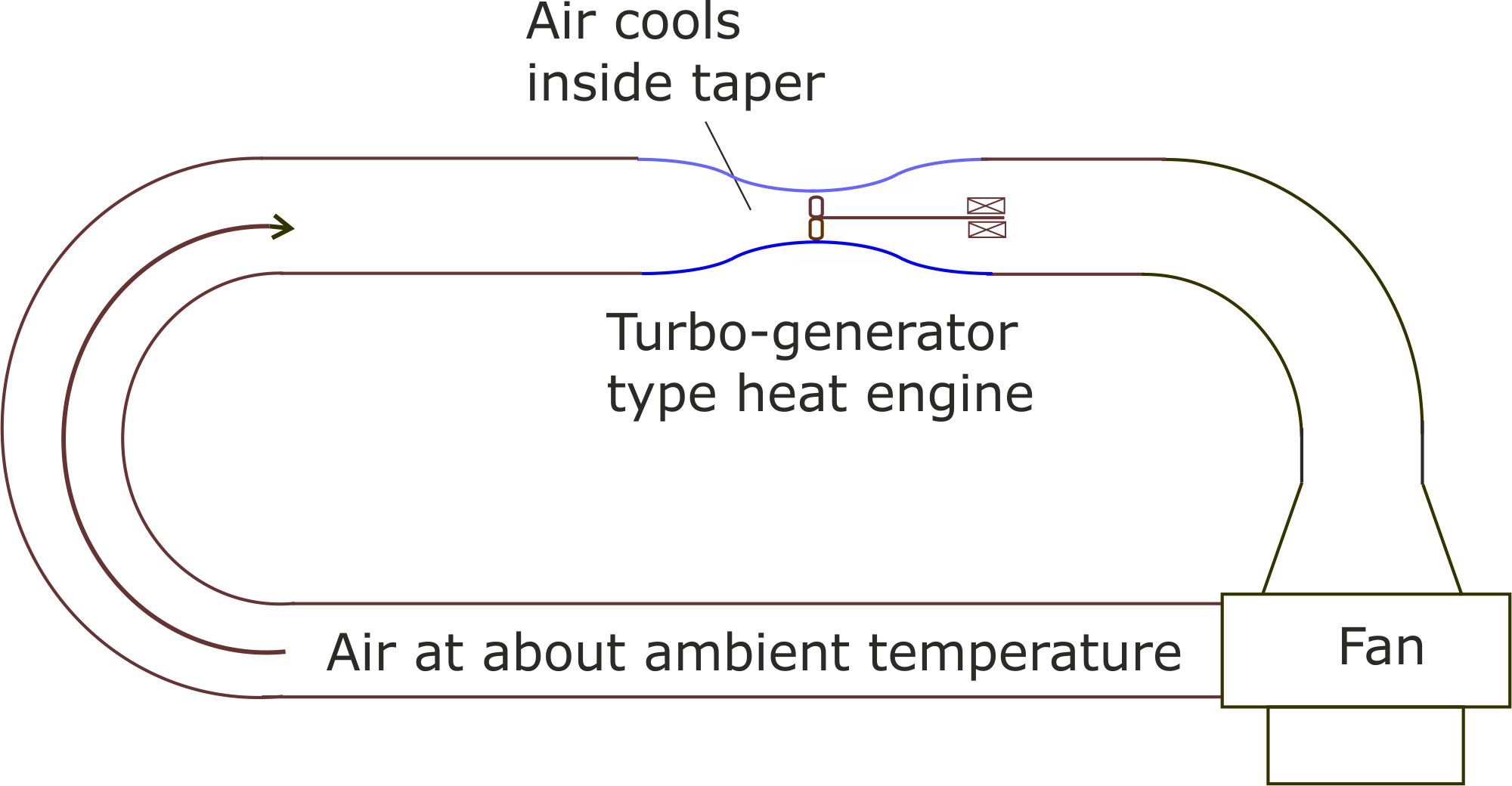
Figure 1. Latent Power Turbines automatically adjust so that the heat engine runs cooler than the surrounding environment. This allows them to run on heat extracted from the atmosphere without violating the second law of thermodynamics.
How a schoolboy’s hobby prepared his mind for spotting a black swan
Bill Courtney is only a scientist of average ability, but his interest in astronomy as a 13 year old schoolboy primed his mind before it could be influenced by the standard textbook teaching on heat engines.
So six years later when he studied thermodynamics at university, he spotted a flaw in the textbook teaching that was well above his intelligence grade.

Figure 2. Thirteen year old Bill Courtney with the 8 inch refractor telescope at the Godlee Observatory on the roof of the Manchester University Sackville Street Building (1959).

Figure 3. As a schoolboy Bill had observed the planet Jupiter through the telescope at Manchester University. He learned that the surface temperature of Jupiter was a bitterly cold -145oC and its most distinct feature, the Great Red Spot was the largest storm in the solar system. More intriguingly, an older member of the Astronomical Society told him that the Great Red Spot was a super-efficient natural heat engine that was running at very low temperatures. Bill had no idea what this meant, but it sounded like a very clever thing to say. So he repeated it parrot fashion to anyone who would listen to him (and to anyone else as well).
In rainy Manchester where the skies were often obscured, astronomy morphed into an interest in meteorology and cloud formation. Bill gained a basic understanding of the Earth’s atmosphere as an assembly of heat powered convection currents that rose against gravity and the descended again.
The synergy of these ideas and experiences planted an unconventional concept of a ‘heat engine’ in his mind. He saw heat being converted into potential energy as masses of air rose upwards against gravity, and then back into heat again when the air descended. In other words, assemblies of heat engines were circular systems where heat was recycled, rather than linear systems, where heat was wasted.
In 1964 Bill found himself studying Applied Physics at Hull University and finally understood what a heat engine was.
He learned that nature has condemned humanity to live in harsh world where approximately half of the heat that is fed into any heat engine at a high temperature has to be rejected at a lower temperature. This loss cannot be avoided because the second law of thermodynamics only allows heat to from flow from hot to cold. So the cool rejected heat cannot be fed back in to the warmer engine.
The lecturer’s gloomy claim was verified by all of the thermodynamics textbooks Bill could find in the university library. Nevertheless he was sceptical because the Great Red Spot on Jupiter must be obeying the same laws of thermodynamics. He concluded that the laws were correct but something had encouraged engineers and scientists to interpret them pessimistically.
The science establishment belief that heat engines are inherently wasteful also seemed to be philosophically unsound because, when left to itself, without human intervention, nature never seems to waste anything,
A partial explanation emerged from the same lecture when he learned about the Kelvin temperature scale. As we elaborate below, the simple formula that underpins this temperature scale may have accidently led heat engine designers astray.
The 1960s was an age of new social ideas and the zeitgeist encouraged Bill to think beyond science towards a cultural explanation for the pessimistic interpretation of thermodynamics.
He was aware that the austere teaching on heat engines had emerged during the Victorian era, at a time when western countries were still strongly Christian. He speculated that this scientific pessimism may have had its roots in the same Victorian mindset that had embraced the concepts of Original Sin and a punitive justice system.
For example, Lord Kelvin who was arguably the most important founding father of thermodynamics saw no contradiction between his scientific work and his strong Christian beliefs. Kelvin was one of the first people to state the second law of thermodynamics (1850) and he used this law to predict the inevitable heat death of the universe (1851).
But the zeitgeist was also working against him. In the most famous British political speech on science of the 1960s, Harold Wilson made a powerful link between high temperatures and progress when he spoke about “The white heat of technology.” [https://www.theguardian.com/science/political-science/2013/sep/19/harold-wilson-white-heat-technology-speech] Britain was also a world leader in ‘hotter than the sun’ nuclear fusion with its ZETA project.
Britain was also ‘conquering’ nature in other ways, working with the French to develop Concorde, the world’s first supersonic passenger aircraft.
Even today, as we turn towards renewable energy, we are out scaling nature by building ever larger solar energy and wind farms.
We are smothering many hectares of prime, south facing agricultural land with more profitable solar panels and building ever larger wind turbines that are pulverising migrating birds.
To ensure continuity of supply when the daylight and winds fail us, we are planning to outwit nature in other ways, by building a worldwide battery and hydrogen fuel cell storage capacity.
There is also a hidden cost to naturbecause our current ‘green’ methods of generating electricity are consuming far more scarce natural resources than our old climate warming ways. [Lawton, G. ‘Net zero’s dirty secret’, page 38, New Scientist, 13 November 2921.]
Before approaching his tutors on the possibility of cool heat engines, he unearthed some supporting evidence from nearer home in the form of atmospheric convection currents, including tropical hurricanes.
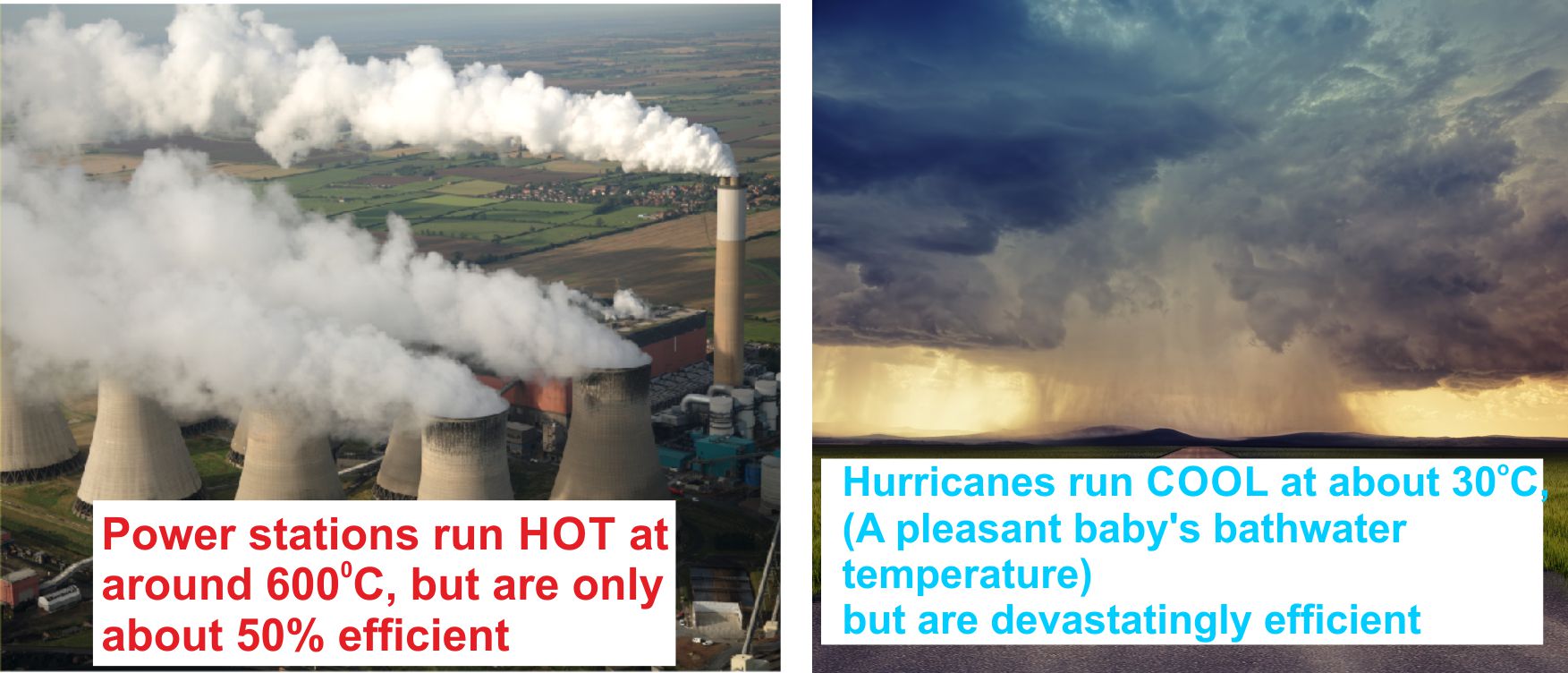
Figure 4. Bill argued that, if nature can create cool but efficient heat engines, humans should be capable of doing something similar. He suggested that the textbook teaching on the inevitable waste produced by heat engines had more in common with doctrinal belief than scientific reasoning.
His tutors dismissed his reasoning with the standard objections to new ideas such as “If cool running heat engines really were possible, they would have been created years ago”. The post graduate physics students who helped out in the undergraduate physics laboratory were equally dismissive. Bill trod on dangerous ground when he suggested that Victorian beliefs might still be influencing modern science.
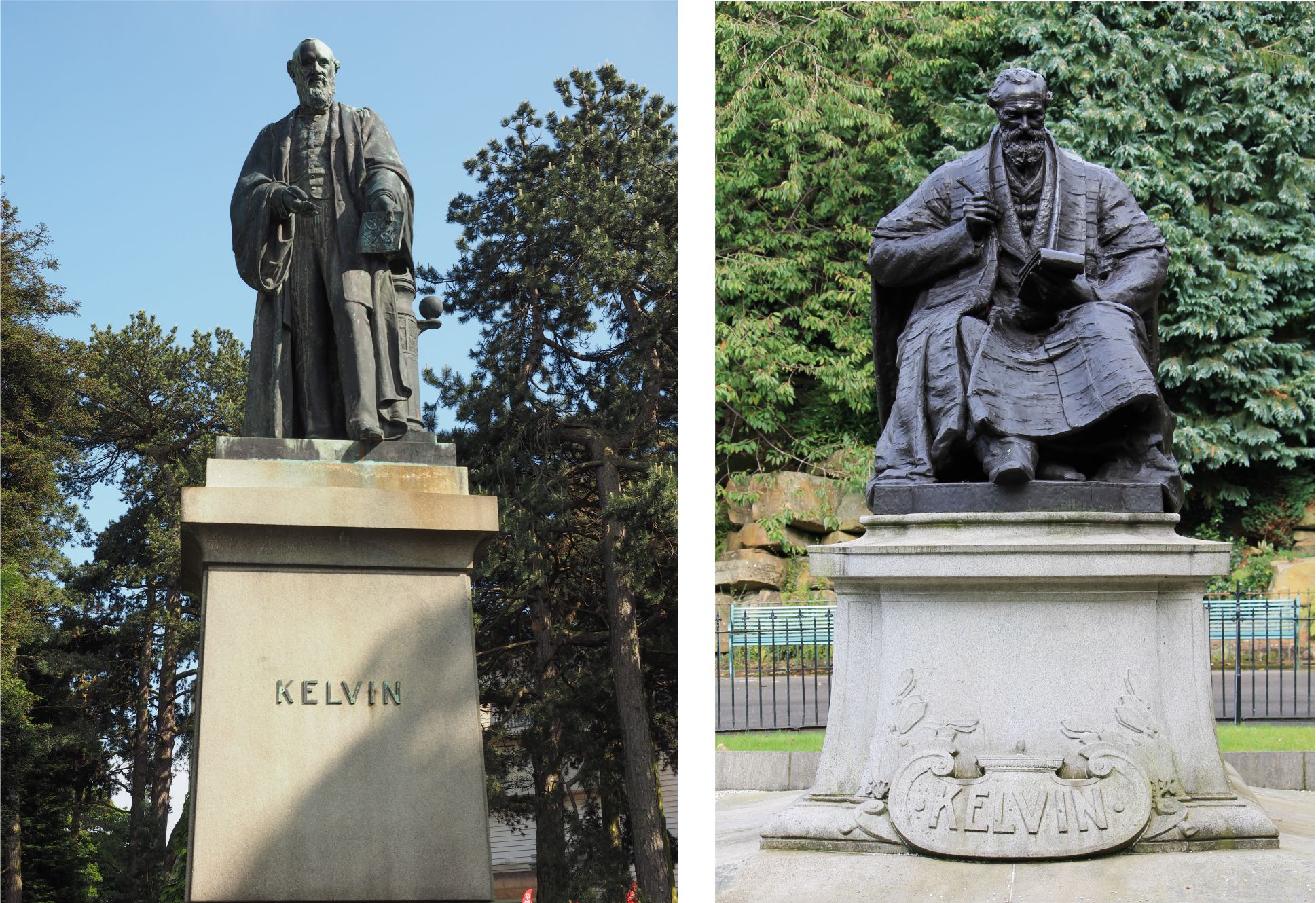
Figure 5. Lord Kelvin is a well statued British scientist.
He further irritated his superiors when he suggested that one of the greatest British scientists of the Victorian era, Lord Kelvin, had accidently helped to create a hot heat engine myth. Kelvin had unintentionally done this when he proposed a heat engine efficiency equation that is universally used today,
h = 1 - TC/TH.
Where h is the thermodynamic efficiency, TH the Kelvin temperature at which heat enters the heat engine and TC the temperature at which it exits.
The most obvious way of increasing h is to make TH as large as possible. So this is the route that heat engine designers have followed.
But Bill argued that the equation only applies to sensible heat, whereas tropical hurricanes are powered mainly by latent heat. (The implications of this difference will be made clear in Figure 19 and Appendix 1 below.)
He proposed a simple test for his suspicions that could be done without having to create an artificial hurricane or make a breakthrough in heat engine design.
Bill reasoned that the latent heat loophole in Kelvin’s equation, h = 1 - TC/TH, would also show up as a loophole in Bernoulli’s equation. [https://en.wikipedia.org/wiki/Bernoulli%27s_principle]
Under phase change conditions, this equation would break down when a mixture of gases and vapours passed through a converging-diverging pipe.
This is his argument, as applied to air.
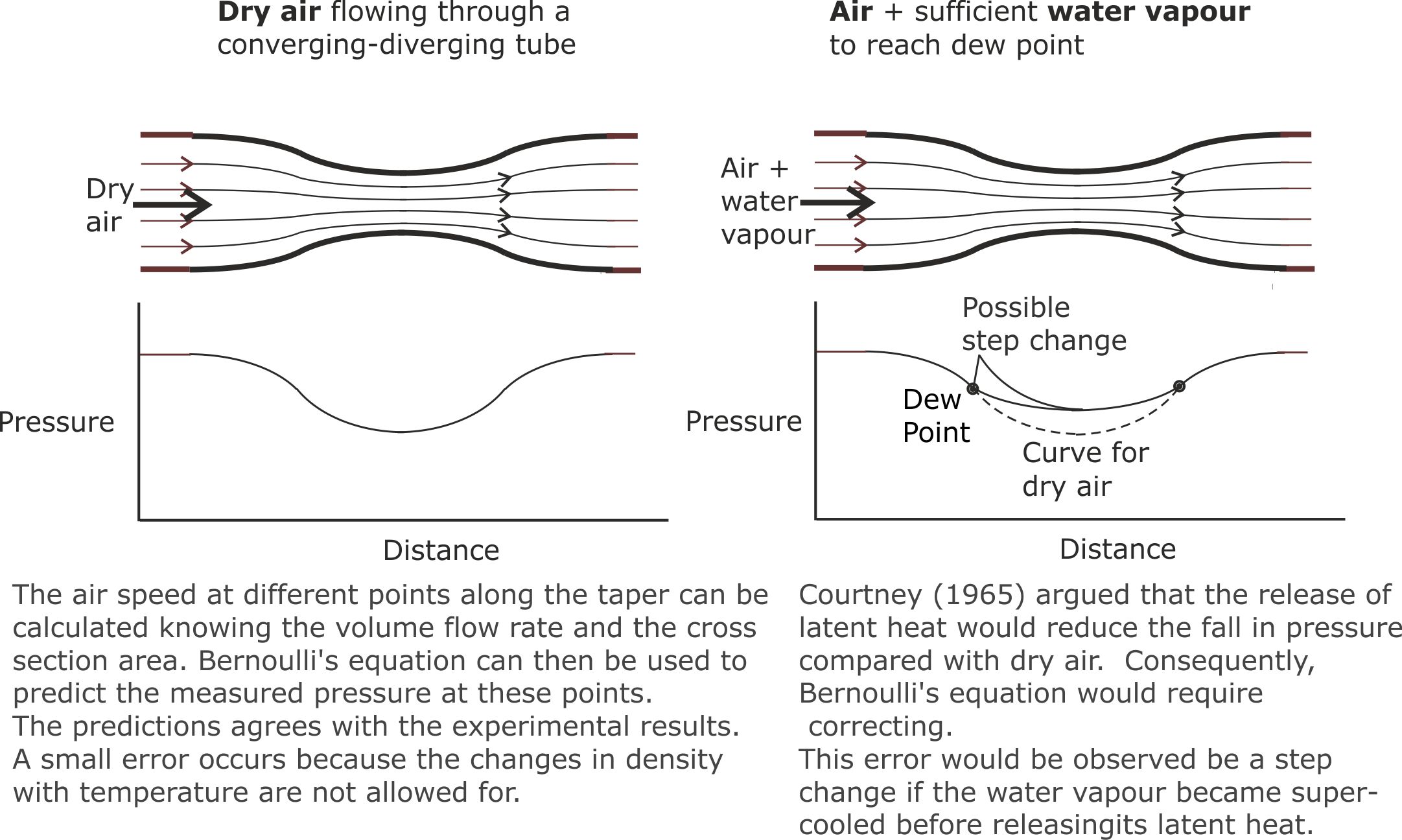
Figure 6. Bill’s prediction was dismissed as “Insignificant” because the Bernoulli equation had been used successfully for more than 200 years without the need for a phase change correction term being reported. (See Appendix 2 below for details of Bill’s predicted correction term.)
As a child, Bill lived in a single room with his parents in Moss Side, near to Manchester University and then on Wythenshawe council house estate. He had failed his 11+ exam and had gone to a secondary modern school for the less academically inclined. So when he ended up studying Applied Physics at Hull University, his friends and family were all very surprised. [In fact, he had only gone to Hull University on impulse, because he had taken a shine to a girl who was moving to Hull! Until weeks before, he had seen himself as having a career working for the local council.]
Bill felt like an over-performing intruder at university and has always been uncomfortable debating his radical ideas with his better academically qualified superiors. This has handicapped his ability to push his ideas forward for more than fifty years.
At university he was half envious of his grammar school educated peers who were conditioned to trusting whatever they were taught and then regurgitating it under exam conditions. In contrast, Bill had to question everything he was taught. He ‘wasted’ a lot of his study time going back to primary sources in the university library. (And of course, doing the other, less laudable things that students do.) Consequently he only graduated with a lower second class honours degree in Applied Physics. But he needed at least an upper second degree to continue his studies. This meant that he was unable to develop his heat engine or Bernoulli equation correction theories at PhD level.
After university Bill spent twenty five satisfying years as a further education college teacher. He worked in South Manchester, trying to provide empathetic teaching for struggling young people who lacked confidence, especially those from council estates and deprived areas such as Moss Side. Many of his students were second generation immigrants from hot tropical countries and they taught Bill about vital resource problems in the developing world. Thanks to his students, he gained a deeper appreciation of how cheap clean energy could level up society across the globe. This fortified him for the many difficult years to come.
As a physics teacher he came into regular contact with university academics. But any attempt to discuss the possibility of power generators inspired by hurricanes was met with polite distain.
Somewhere around 1970 Bill read about a proposal to install very tall chimney tubes at busy road junctions in Los Angeles, California. Their intended purpose was to vent off the smog produced by dirty car engines. He realised that the liberation of latent heat as the humid air roes inside a venting chimney could be used to drive a turbine inside the chimney. In effect, he envisaged generating electricity from an artificial hurricane.
The concept was exotic and not practical for widespread use. But it could act as a ‘black swan sighting’, demonstrating the thermodynamic validity of cool running heat engines. However, catalytic converters soon emerged as a more practical way of eliminating the Los Angeles smog.
Tropical hurricanes and the Great Red Spot were inspirational to Bill, but their size was also a debating weakness.
A common way for opponents to shut down discussion over the years has been to point out that a heat engine that mimics a tropical hurricane would be very large and impractical. But this misses the point. Such a device does not need to be commercially viable, it only needs to arouse engineering curiosity and break the taboo on cool heat engine thinking.
During the next fifteen years, the frustrating task of championing cool heat engines took second place to the more immediately rewarding work of helping young people from disadvantaged backgrounds by working as a physics teacher.
Then in the 1980s, he started to see the downside of the science and technology based careers he was so proudly leading his students into. He still passionate believed in the value of a science based society, but a series of environmental events of worldwide importance troubled his conscience.
In 1985 while crossing a wet Alpine glacier which was steadily melting in the summer heat, Bill had a ‘Damascus Road experience’. This gave him a new lifetime goal of helping young people in a different way, by using his ‘Jupiter insight’, to fight for a better environment.
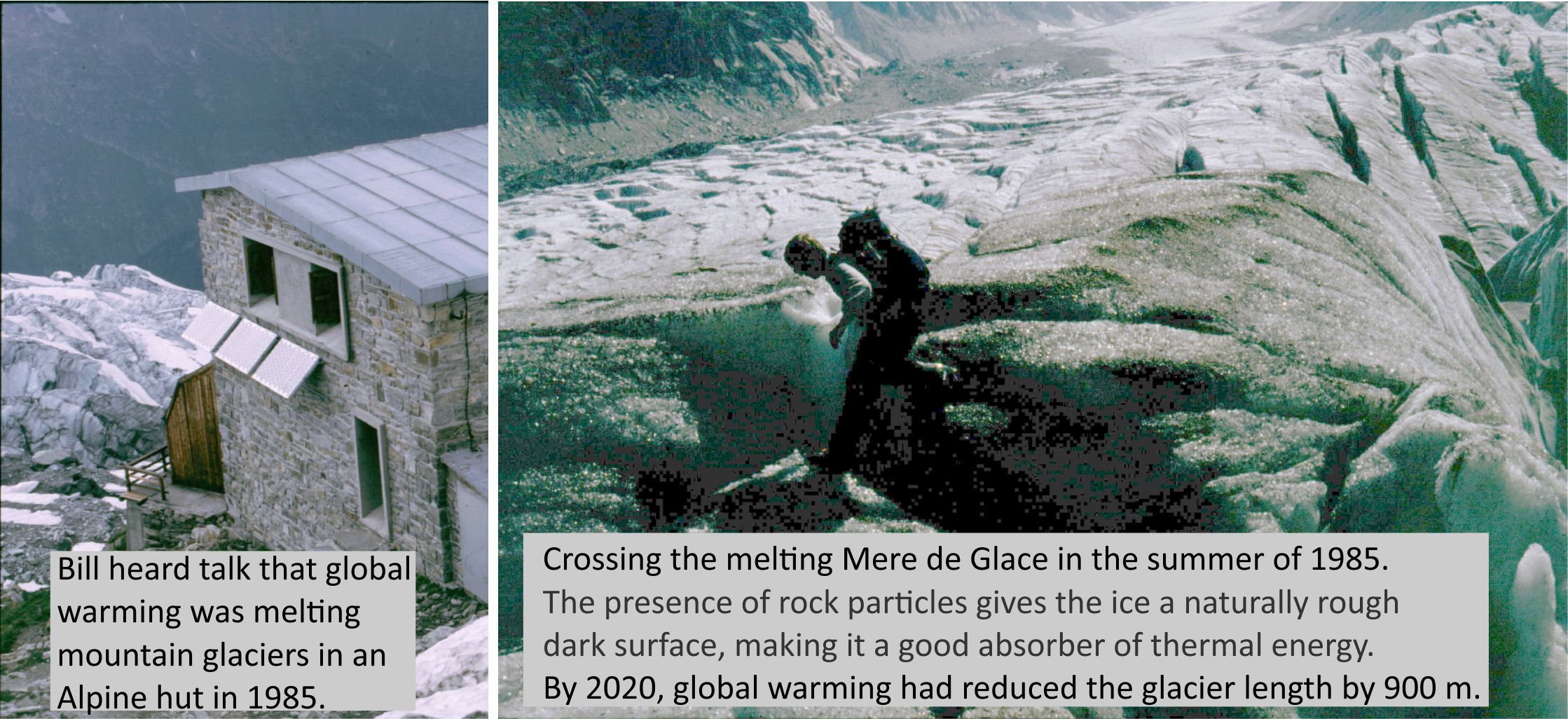
Figure 7. In 1985 the need for a cool running heat engine suddenly took on a new urgency when Bill feared that the ice below his feet might be disappearing forever.
The previous evening while staying in a mountain hut on the flanks of Mont Blanc, a group of fellow visitors were holding a science based discussion about global warming.
In particular, they alarmed Bill with convincing arguments that all of the Alpine glaciers might be lost within a century. Bill didn’t need much persuading because during his holiday, he had passed the foot of several glaciers and seen the moraine (rock debris) evidence the environmentalists were discussing.
As he crossed the Mere de Glace he mused that a twist of fate as a schoolboy astronomer had given him a unique insight and he had a moral duty to promote it. He speculated that a cold running heat engine buried in the ice would have similar properties to a heat pump in that it could extract heat from the ice, but with the difference that the output would be electricity. This could be used to power a snow making machine, which could then be used to coat the grubby surface of the glacier with solar heat reflecting white snow.
Burying cool heat engines in the ice was not a realistic solution to the melting glacier problem, but it was a useful thought experiment that took on a more practical form over the following year.
By the mid 1980s, Bill saw four problems and an opportunity that he might be able to address using his novel insight into heat engines. The problems were (i) global warming mainly due to CO2 emissions, (ii) acid rain caused by pollutants in power station chimney gases, (iii) the destruction of the earth’s skin cancer reducing ozone layer by CFC refrigerant gases (iv) the need for a new type of portable, mains free refrigerator, for storing vaccines in remote parts of the developing world.
.
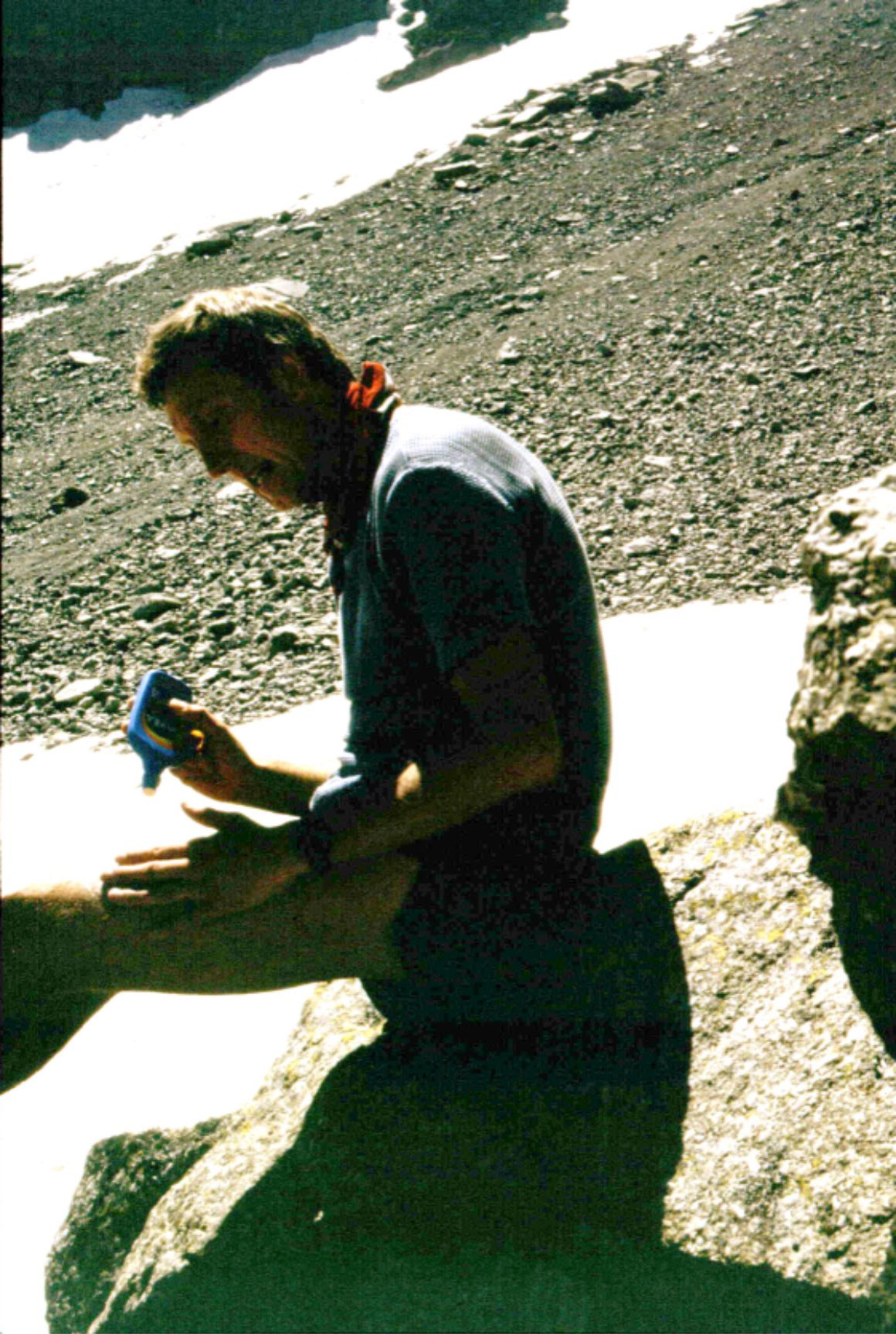
Figure 8. On the snow fields of the high Alps in 1985, Bill was slapping on the high factor suntan lotion. This fed into his Damascus Road experience, because he realised that by covering glaciers with summer snow, it would increase the sunburn threat but also protect the ice from melting.
Shortly before setting out for the Alps, the discovery of a hole in the Earth’s ozone layer was announced. This was particularly dangerous for Alpine mountaineers because of the combined effect of the reflectivity of the snow and reduced UV radiation absorption by the thinner atmosphere at high altitudes.
His new life quest was not all about environmental damage limitation because in 1986 an opportunity emerged too. A new class of superconducting materials that offered zero electrical resistance at temperatures similar to those found on the planet Jupiter was discovered.[https://en.wikipedia.org/wiki/High-temperature_superconductivity]
Bill realised that the four problems and superconductivity would all benefit if a new type of refrigerator could be invented. That is, one that could produce power instead of consuming it, did not require CFC gases and could operate at both domestic refrigerator and cryogenic temperatures. Such refrigerators could also be used to intercept power station flue gases, cooling the gases to improve power output, while producing acid rain inside the chimney for capture.
Eight months after Bill returned from the Alps, the Chernobyl nuclear reactor blew up and humanity lost faith in nuclear power as a carbon free alternative to fossil fuels. This further incentivised Bill to champion cool heat engines.
The problem was that he had no academic status or means of financing his own research. His theories were viewed as a heretical because they contradicted textbook teaching and he was a mere ‘Mr’ Courtney who taught physics in a college , in a snobbish academic world, were the clever thinking was supposedly done in universities by people called ‘Doctor’ or ‘Professor’.
********************************************
Overview of 1986 –Present
The philosophy that guided Bill Courtney
The industrial revolution started in Britain, and on the whole, we Brits can be proud of the benefits it has brought humanity.
Worldwide, people live far longer and enjoy more comfortable lives than before industrialisation. Democracy is replacing autocracy and ever so slowly, equal human rights for all are being delivered.
But these benefits have not been evenly distributed, with the inhabitants of tropical countries seeing the least gains to date.
This is ironic because the growth of industrialisation required essential resources from the tropics including slave labour, minerals, rubber and tropical hardwoods.
And by 1986, the climate change caused by industrialisation was starting to deliver a new injustice, with the largest changes in climate being detected in the tropics
[Ground zero for climate change: the tropics were first to ...]
This seemed grossly unfair to Bill Courtney, but in 1986 he saw a way of redressing the balance.
Based on his 1960s informal studies, he had the first draft for a cool running heat engine. This would generate low cost clean energy to the northern countries but offer even greater befits in the tropics by delivering indoor air cooling and some fresh water.
Bill had a talent for creative scientific and engineering thinking, but his analytical skills were only average. He was also, only a ‘Mr Courtney’. So he came up with two alternative strategies for gaining credibility and attracting analytically skilled partners.
According to the first strategy, he would make a name for himself by coming up with some relatively minor innovations that attracted public interest and earned royalties.
This website is littered with examples of his inventions that remain relevant today. Many more inventions do not appear because they have been outdated by advances in technology. In his attempts to make a breakthrough, Bill has filed around 80 patent applications.
Bill’s priority was to fight climate change, preferably in collaboration with a British university partner. So he could not afford to spend years commercialising his inventions while the planet overheated. He was also worried that if he started a business, he would be distracted by responsibilities to his employees and partners. Building a business could be lucrative and fun, but it would also consume all his time, energy and creativity.
So he opted for teaching himself to write patents and then licensing his patented inventions to industry. He was fortunate here because in those days when patents were paper documents, Manchester Central Library included a well stocked patent library.
This licensing strategy eventually failed because his simpler inventions met the ‘not invented here’ barrier and his more technical inventions were ahead of their time.
An illustrative example that failed on both counts was his engine immobiliser to prevent car thefts (1990). This won a Sunday Times award and free promotional assistance from a well known public relations company. But in spite of their professional assistance, none of the car makers wanted to know. So Courtney abandoned his patents. Within five years, cars using similar technology were being sold.
His alternative strategy, which he pursued in parallel, was to work with a university developing a big, ‘cash cow’ invention. This was a multi-purpose crash, vibration and blast protection fluid which he called Shock Absorbing Liquid (SALi).
His hours spent studying in the Manchester patent library led him to believe that SALi was novel and he was optimistic that in time, a number of British universities and engineering companies could become involved. This would make Britain the hub of a new form of life saving technology. As a keen educator and believer in equality, he hoped that, in time, SALi would result in technology based jobs for the whole spectrum of British youth.
In 1992, with this equality goal in mind, Bill and a colleague Graham Peak presented their ideas for an equal opportunities recruitment system at Manchester Town Hall. The proposal went down well with local business leaders, but again was ahead of its time.
This second strategy seemed like a viable plan back in 1986 and at its peak, at the start of the new century, six UK universities were involved in SALi research. But the strategy came to nothing because it failed to take into account the corrosive effects of academic rivalry between two of the universities involved during a 2004 amalgamation and the unexpected willingness of the United Kingdom Research Integrity Office to collude in hiding research fraud.
The outcome of the 2016 Brexit referendum hammered the final nail into the coffin of Bill’s plans for a British based solution to climate change.
The severing of ties with Europe resulted in a British retreat from radical engineering innovation for the foreseeable future
In 2020, as the pandemic raged and after years of struggle, he surrendered all his intellectual property rights and announced that anyone, anywhere in the world was free to develop his inventions.
Overview ends
*******************************************
Two potential breakthroughs that wasted twenty years (1986- 2006)
In the summer of 1986, Bill decided to celebrate his fortieth birthday by cycling off-road from one end of Britain to the other. The long days of cycling alone over rough ground were very productive, delivering two entirely different inventions.
While repairing a tyre puncture at Cape Wrath, his mind dwelled on peristaltic pumps, which later morphed into a dual chamber displacement pump. This became a key component in his refrigerator design and he patented it.
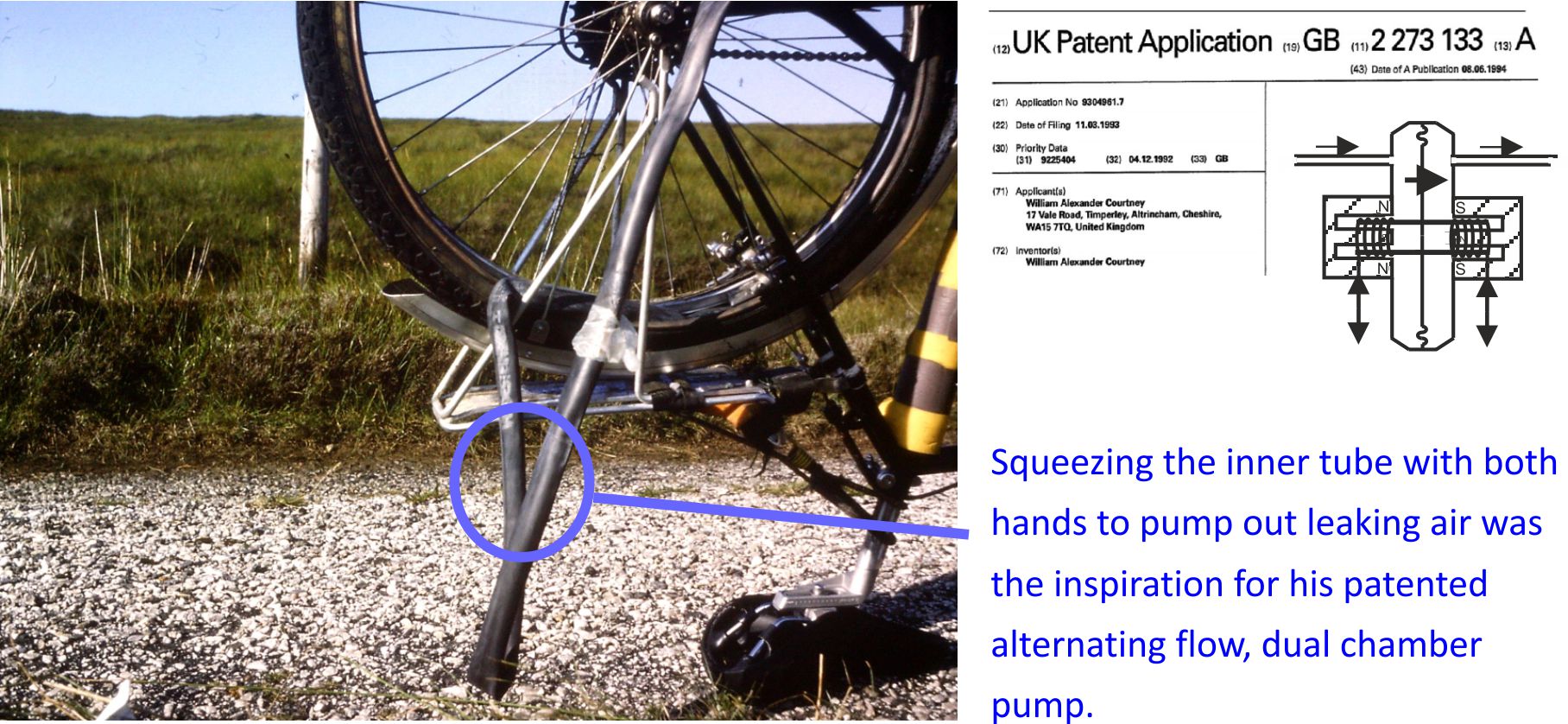
Figure 9. A serendipitous cycle inner tube repair on the track to Cape Wrath.
In that isolated spot, Bill wanted to avoid the messy business of removing a greasy back wheel and then immersing the inner tube in a puddle to detect the leak. Instead he squeezed the inner tube with both hands in the manner of a pair of peristaltic pumps and detected the ejected air jet with his cheek. He immediately realised that he had the germ of an idea for fighting global warming and photographed the incident for posterity.
The pair of human hand operated peristaltic pimps became an alternating flow duel chamber displacement pump and the air jet became a turbine that cooled air as it did work generating electricity.
A power generating refrigerator to fight global warming
Here is a diagram of an air cooling version of the power generating refrigerator. We use this illustration because of its current significance.
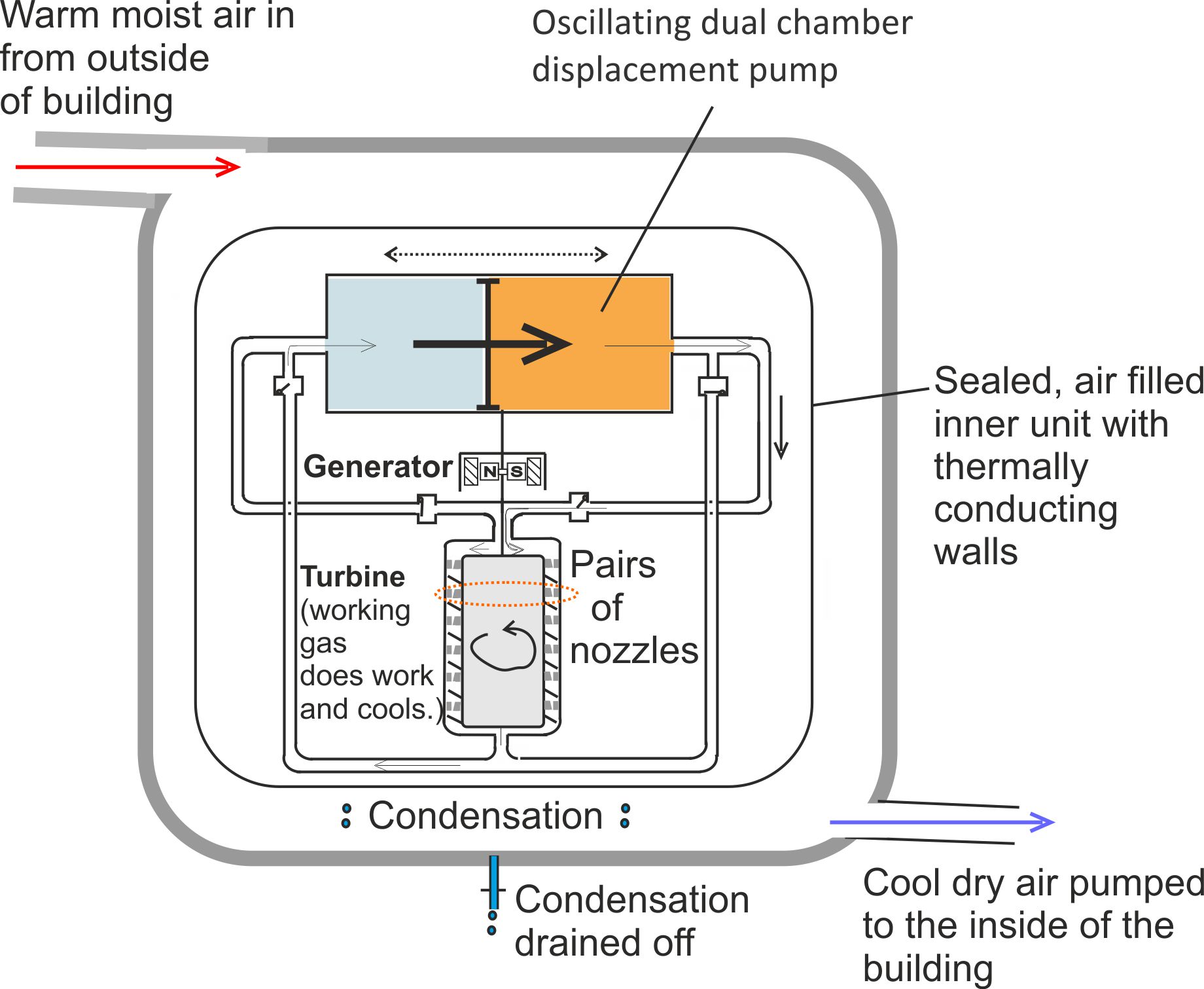
Figure 10. This is a concept diagram of a power generating air cooling unit. But Bill did not have the funds to commission a working model.
[A note for the COVID-19 era. There is an important difference between air cooling and air conditioning. Air cooling requires a lot more heat extraction, which is acceptable in this example, because it generates more electricity. According to Bill’s 1986 long term vision, power generating air cooling units of this sort would have been installed instead of air conditioning units within twenty years. This would have made warm indoor spaces a lot safer during the COVID crisis. Air cooling by continuously introducing fresh air at floor level, followed by warmer air extraction at ceiling level would have offered an important airborne virus purging benefit compared with conventional air conditioning, which continuously recycles the same air. ]
A cash cow invention to fund Bill’s work fighting global warming
His second invention had no direct connection with global warming, but offered the prospect of becoming a cash cow that would generate funding for his global warming work.
Bill was a pretty hopeless off-road cyclist but his numerous minor cycle crashes inspired him to develop a new crash protection technology. He called this Shock Absorbing Liquid (SALi). Importantly, SALi was a very simple concept and as a fellow science teacher gently teased him, he ‘might be on to something sensible at last’.
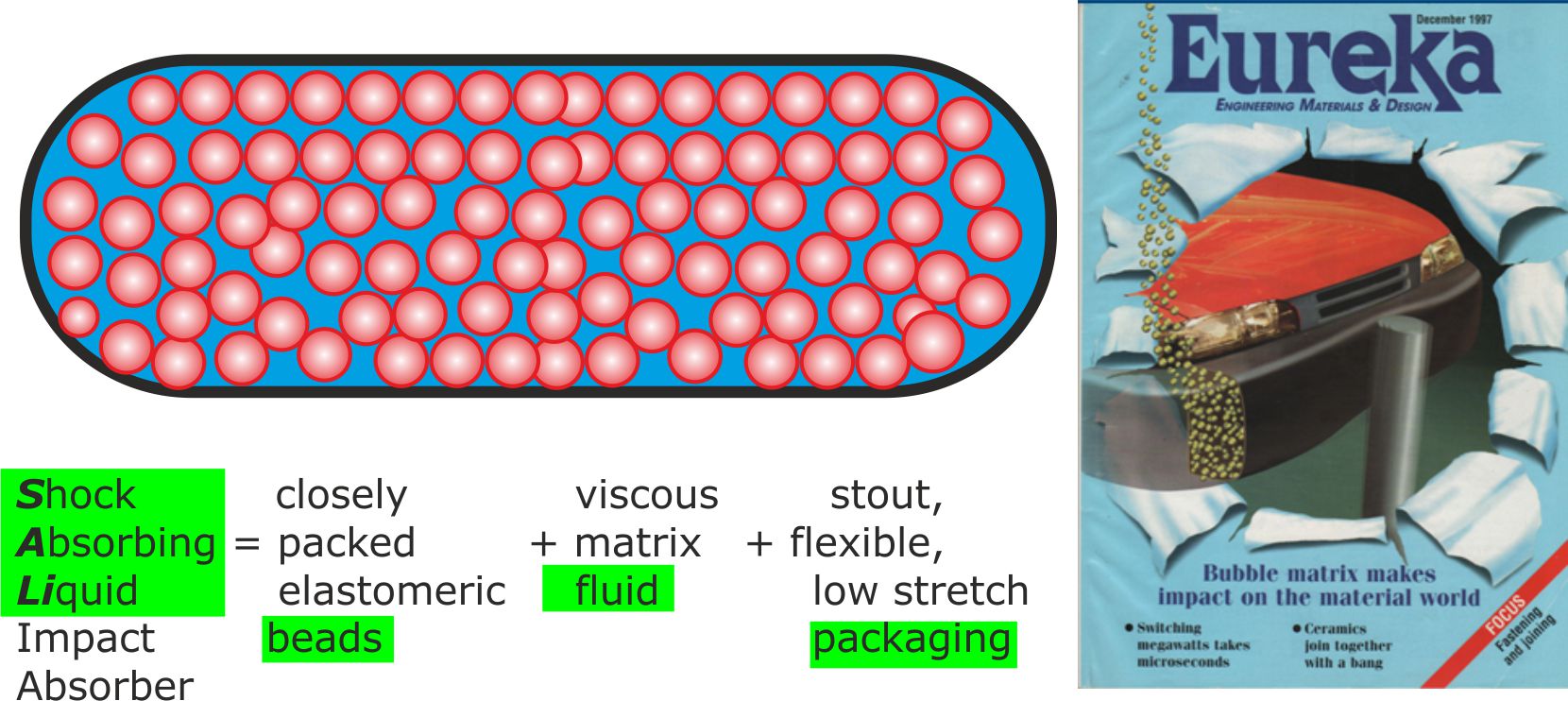
Figure 11. The basic 1986 SALi concept was simple and fitted in well with orthodox engineering thinking. A decade later, after going public, it gained considerable publicity. For example, it was the cover story on Eureka, a widely read academic engineering magazine.
From 1986 onwards, Bill spent his Saturday mornings in the patents section of Manchester Central Library, searching patents going back over a hundred years. He concluded that his SALi and refrigerator designs were both original, but that SALi would be a far easier concept to market. This gave him the confidence to live frugally for ten years while he built up his savings. Then, in 1996, at the age of fifty, he gave up his teaching job to work full time at Manchester University, developing SALi. He hoped to win status with academics by gaining a PhD, win approval from industrialists by licensing them a range of profitable crash protection inventions, and earn money from royalties to invest in power generating refrigerator research.
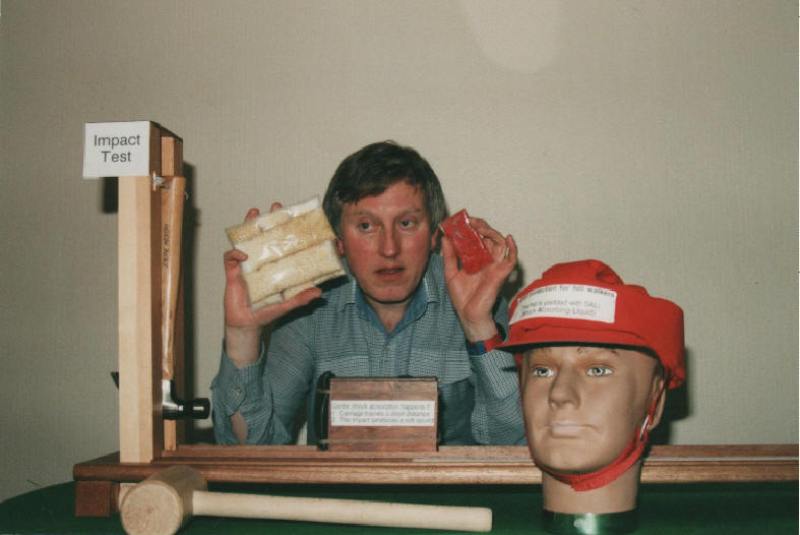
Figure 12. Bill with his basic 1980s SALi test rig.
This rig was featured on BBC 2’s Money Programme, 27th October, 1996. By this time he had enrolled as a mature engineering student at Manchester University. Many staff saw this programme as excellent publicity for the engineering department. But a tiny minority resented an unpublished and untitled incomer hogging the limelight. They were also scathing about Bills ‘toy’ test rig because it was too simplistic and did not fit in with the image of a modern computer oriented engineering department.
Nevertheless, in 1996 Bill felt like he was coming home when he started doing research into SALi at Manchester University. After all, this was the university where thirty seven years earlier he had looked through a telescope and gained knowledge that gave him a lifetime goal. [Pedants will note that the current Manchester University was in fact two universities in 1996, with the ‘Jupiter’ telescope being on the UMIST site. But SALi research took place on both campuses, with good SALi research being done on the UMIST site and problematic research being done at Manchester University where Bill was registered as a student.]
Powered by a heady mixture of sentiment, awe and appreciation for being accepted as a mature student, Bill failed to spot the looming problems during his early days. Instead he placed his trust in Manchester University and happily signed away his SALi intellectual property rights to the university. In return, MIL, the University business arm agreed to pay him 50% of any royalties it earned from licensing SALi to industry.
Unfortunately this benevolent contribution to university life backfired against him when his research supervisor at Manchester University feared becoming eclipsed.
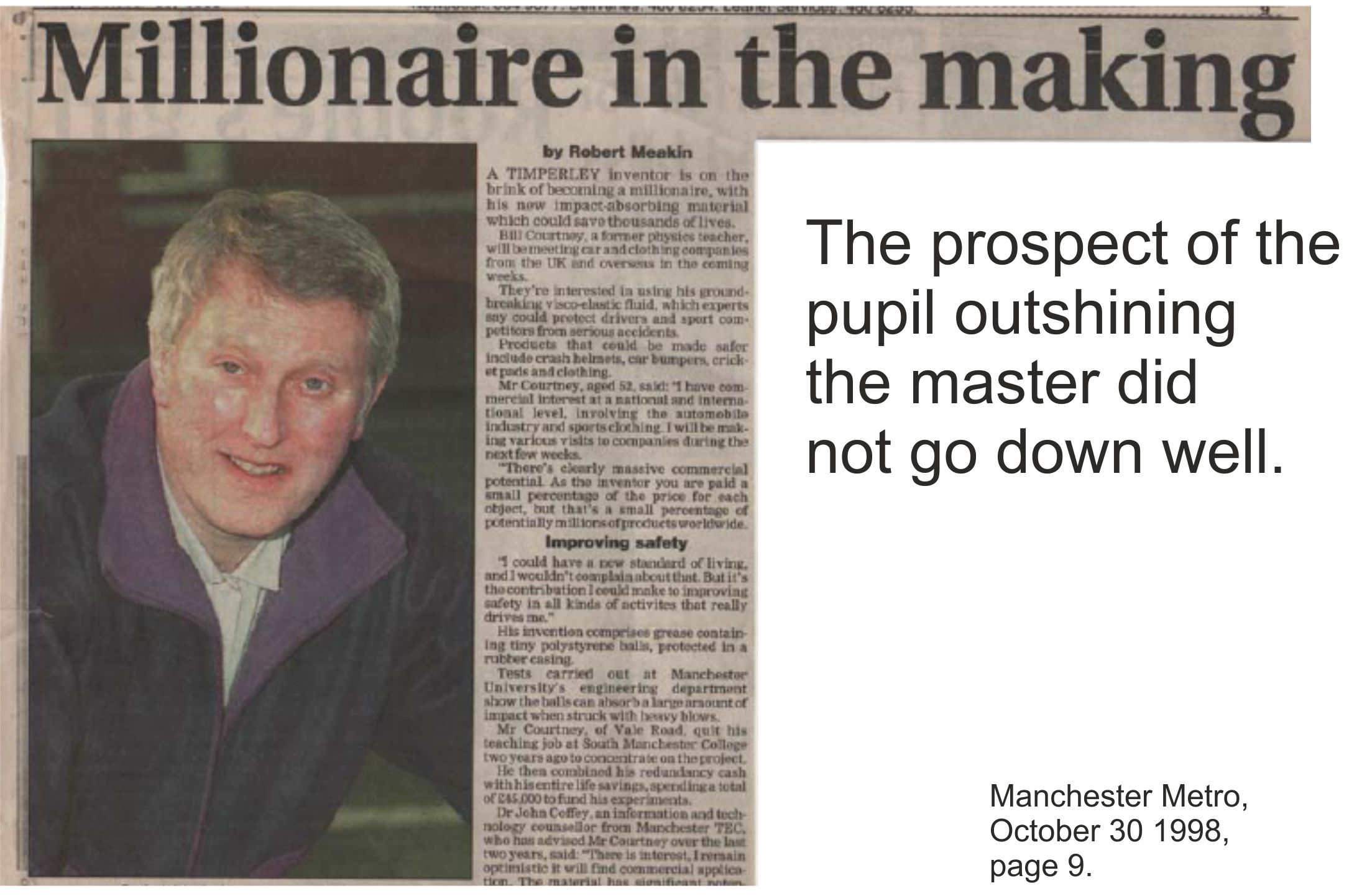
Figure 13. Bill’s supervisor threw a whole bagful of spanners into the SALi research works. As explained on this linked page, this handicapped SALi development at Manchester University and other universities too.
Here are three illustrative incidents.
- In the days shortly before the amalgamation of Manchester University and UMIST, excellent SALi research was being done at UMIST, but fraudulent SALi research was being done at Manchester University. So to protect the good name of their pending combined engineering departments, the UMIST researchers offered to take over the fraudulent work and do it properly. Bill agreed that this was necessary. But this angered his Manchester University supervisor and two of his immediate superiors, who closed ranks to block the UMIST remedial action.
[We have published a lot of evidence to support this claim. To pick up the trail, you need to start at this linked webpage.] Bill’s supervisor responded by blocking the publication of three SALi research papers and several funding bids that Bill had written. [Supporting evidence is supplied on the same linked webpage.] - With assistance from UMIST and Cardiff University, Bill had designed SALi based car suspension units. But a researcher at Cardiff University discovered journal paper evidence that Bill’s supervisor had leaked these unpublished designs to the Chinese
Click to see the evidence. - A confidential source inside Manchester University secretly tipped Bill off that his supervisor had made two trips to America where he attended engineering conferences and presented false evidence that SALi was ineffective.
Full details of the fraud are published on our linked webpage. Here is a summary of it.
SALi requires Low stretch packaging for effective impact energy absorption. But the fraudulent experimental evidence presented in America described work done using high stretch packaging. This made the SALi ineffective. Bill had been aware that fraudulent research was being done and had protested in writing about it. But in order to protect the reputation of the pending new Manchester University, it was convenient for management, right up to Vice-Chancellor level, to ignore this fraud.

Figure 14. A conceptual summary of the SALi research fraud.
Bill tried to expose the research fraud committed by his supervisor because, as explained on our linked PedSALi research page, it may have cost European pedestrian lives.
In spite of written protests from Bill, the misleading research results were written up and published in several research papers. These papers were co-authored by his supervisor, the Professor in charge of the research group and a Reader in Engineering who was drawn in to hiding the fraud. A reference list for their dishonest papers can be found on the PedSALi research page.
Manchester University sacrifices research integrity to protect its reputation
This threat of fraud being exposed worried the Manchester University staff for two reasons.
It might prevent them from getting the top departmental jobs after amalgamation with UMIST and it also threatened their lucrative European research funding.
Bill ended up being ostracised, bullied and threatened with legal action by his Manchester University colleagues. The good SALi researchers at UMIST who had also tried to fight the fraud, jumped ship at amalgamation and moved to a university in Scotland, where hopefully, they thrived.
Bill eventually became so ill that he broke down and withdrew from the university in 2004, suffering from depression, losing weight and becoming partially sighted. He had lived frugally for ten years, building up the funds so that he could work at Manchester University. And then spent another decade watching all his efforts come to nothing.
Meanwhile, the planet had heated up by about 0.3oC and he was no nearer to using his unique insight to help save it.
His best SALi research which would have exposed the fraudulent papers presented in America had not been published; he had signed away his SALi patent rights and lost his £140,000 retirement savings on expensive international patents and other expenses.
Here is the key section of the agreement where he signed away his intellectual property rights.

Figure 15. This is an extract from the agreement between Bill Courtney trading as Cheshire Innovation and MIL, the business arm of Manchester University. At the time of signing Bill thought that his intellectual property was now in safe hands and could continue to generate royalties for his extended family in the event of his demise. Consequently he continued to pay all of the expensive international patent costs out of his own funds on the assumption that he was making a good investment.
Instead, the whole SALi enterprise collapsed, setting back his plans by twenty years.
Bill had been working on his power generating refrigerator designs since the mid 1980s and filed patent applications to protect them.

Figure 16. These are the core patents that protected Courtney’s 1980s power generating refrigerator designs.
How Britain lost the patent protection for this invention
As a royalty earning strategy, these patent applications were filed too early because Bill did not have the funds to take them forward at an international level. This meant that he only had UK protection. But his Saturday mornings spent in the patent library proved evidence that other inventors were coming up with similar ideas. If he had been slow to file, others might have beaten him to it.
He tried to get round the problem by only revealing details of the pump his invention required, while keeping details of how they produced cooling secret.
His financial situation became worse and he lost control of these UK patents after failing to pay their annual renewal fees. The underlying financial crisis was triggered when Manchester University used its solicitors Eversheds to intimidate him into paying for misleading SALi research done by a third party but overseen by his supervisor. The strategy was simple; if Bill had given in to the intimidation and paid up; his payments could have been cited as ‘proof’ that Bill was happy with the misleading work.
He never gave in and eventually the intimidation ceased. [But Bill had to use the Freedom of Information Act to obtain copies of the internal memos which verified that the University had abandoned its use of Eversheds to intimidate him.]
In the meantime, the threat of an expensive legal battle with Manchester University forced him to cut his expenses to a minimum. This included abandoning several patents that he had already spent many months and thousands of Pounds on.
Details of the intimidation and a sample letter from Eversheds are presented on this linked webpage.
Failure to maintain the patent fees meant that anyone could copy his designs and he had nothing to offer, to entice engineering companies to work with him.
It is important to state for the record that the honest employee of MIL who negotiated the royalty sharing agreement with Bill also left the University at around the time of amalgamation and had nothing to do with the intimidating letters sent by the University solicitors, Eversheds.
Bill continues his fight to expose the Manchester University research fraud to this day.
A new start becomes necessary
So, twenty years after he had started living frugally to fund his SALi a cash cow project, he had to start from scratch again. This meant coming up with an entirely different type of power generator that he might be able to patent.
Environmental priorities had also changed over the twenty years. New ozone layer friendly refrigerators were in full commercial production and the excitement over superconducting electricity cables had largely faded.
Working on new inventions as depression therapy
For a while, tidal power was attracting serious investment money. So Bill tried his hand by patenting an entirely new tidal barrier design. Essentially, this was a giant version of his dual chamber displacement pump, but working in reverse.
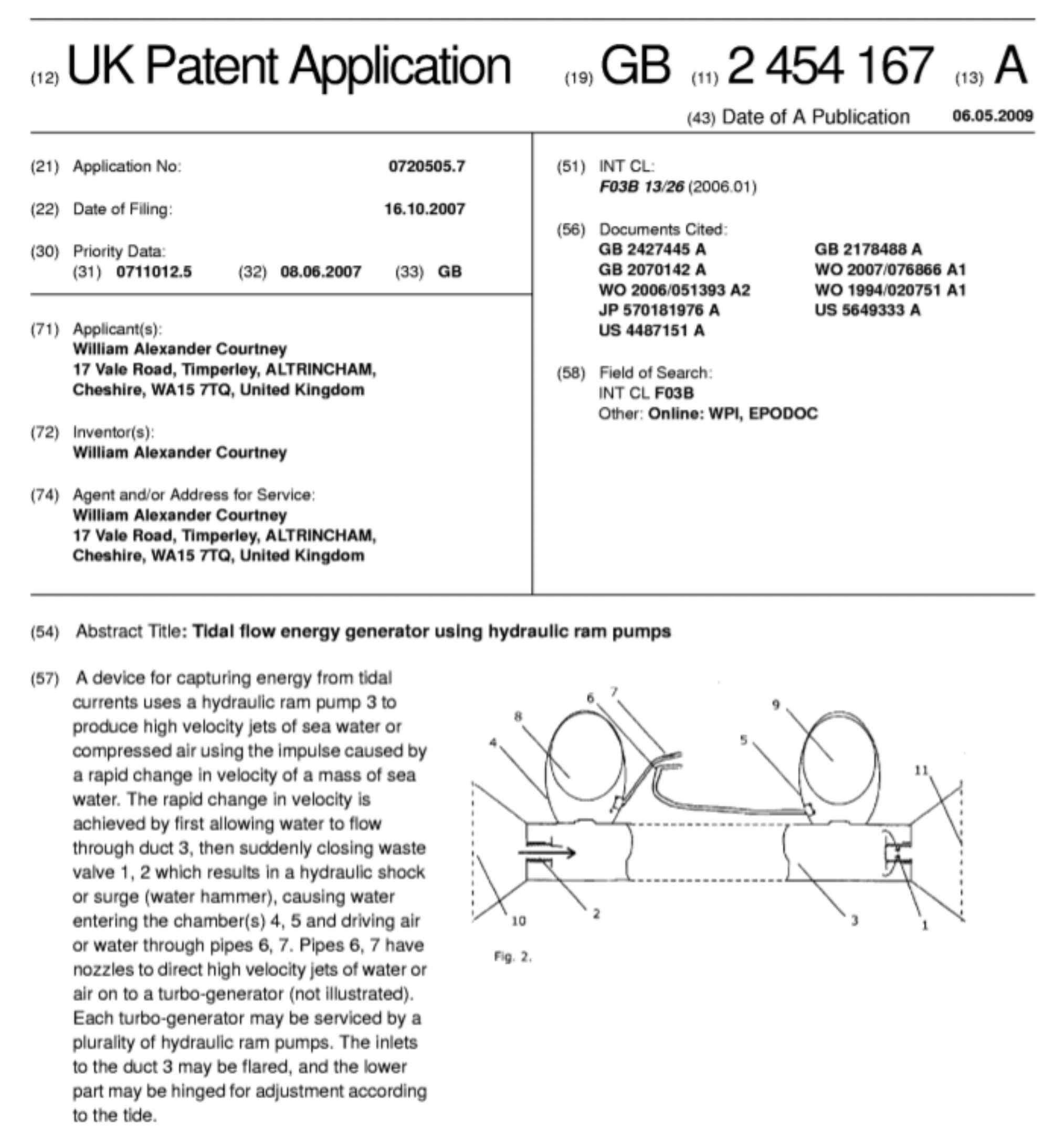
Figure 17. Tidal water would flow through a large diameter pipe in opposite directions, depending on the direction of the tide. This activates a hydraulic ram pump, which powers an electricity generating turbine. Essentially, it depended on the same concepts that Bill had imagined when repairing his bicycle inner tube twenty years earlier.
His spirits were low at this time and he struggled with eyesight problems. So he failed to put much energy into exploiting his patent. This may have turned out for the best because international interest in tidal energy waned. With hindsight, the tidal barrier was more of a desperate effort to reclaim something from the twenty wasted years, rather than a serious invention.
There was a second green energy theme attracting funding at that time: harnessing the large amounts of low grade heat dumped into the atmosphere by power station cooling towers.
Clinical depression was dulling Bill’s mind at the time. So he played around with solving this problem more as a form of therapy than because he believed in his first attempt at a solution.
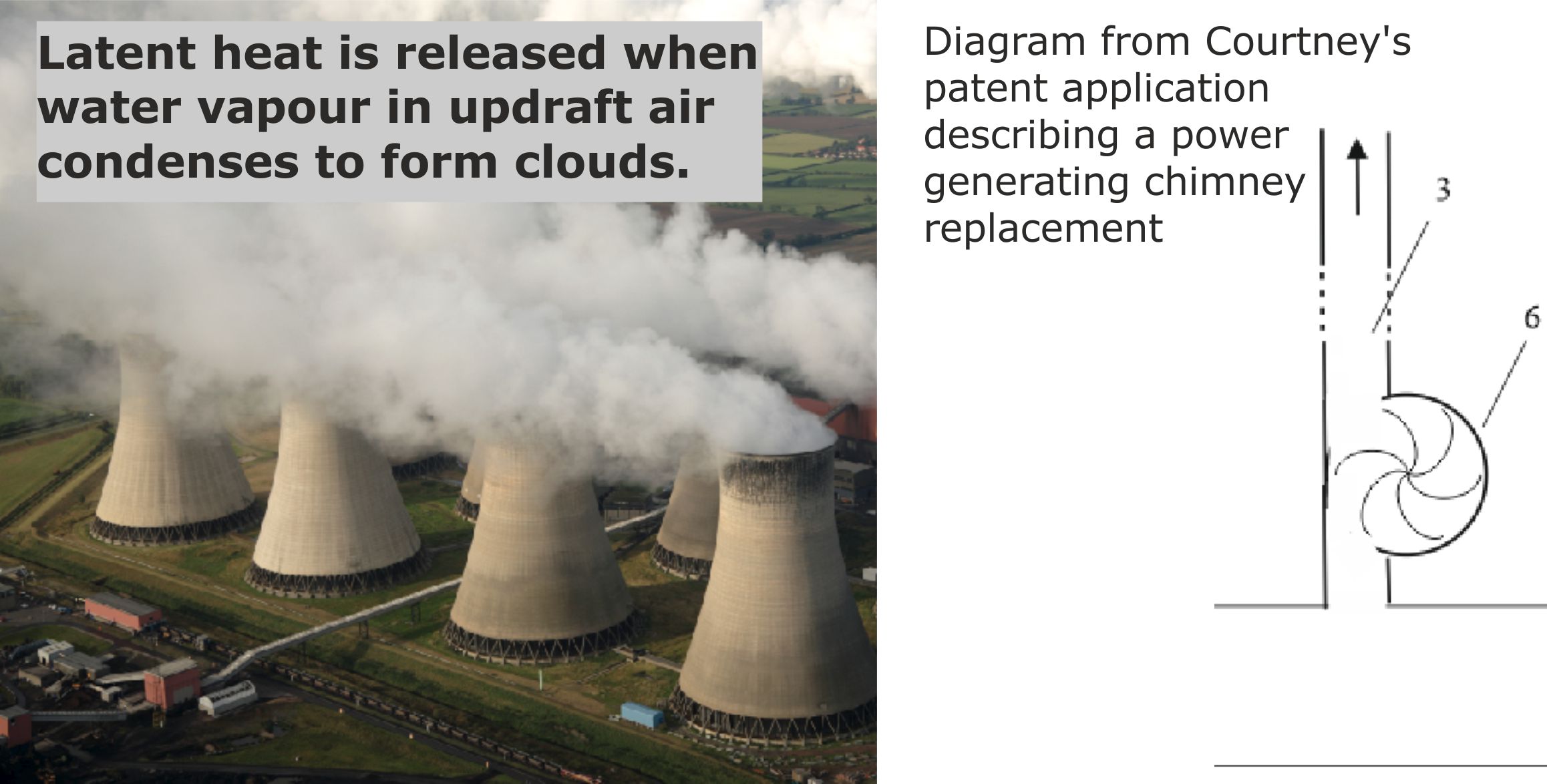
Figure 18. Bill noted the similarity between cooling towers and his 1970s fantasy of tall power generating chimneys to vent off Los Angeles smog. In addition to generating some additional electricity, updraft chimneys would recapture the cooling water; reducing the mass of cooling water that had to be extracted from local rivers and aquifers.
The summer of 2003 was the hottest European summer on record. In the UK it caused heat distress for passengers on the London Underground system.
Ken Livingstone, then the Lord Mayor of London announced a competition to find a solution to the problem.
http://news.bbc.co.uk/1/hi/england/london/4562379.stm
The summer air in the underground tunnels is both hot and humid. So, based on his 1970 Los Angeles power generating chimney concept, Bill filed a patent application and submitted a similar proposal for cooling the London Underground. His thinking was that by submitting a slightly outrageous solution to the Underground cooling problem, he could at least draw attention to the possibility of replacing conventional power station cooling towers with a new type of power generating chimney. This proposal sounds bizarre today, but was not at the time because the Australians were also toying with the power generating chimney concept. The difference being that, the Australian chimney involved dry desert air and there was no release of latent heat. [http://en.wikipedia.org/wiki/Solar_updraft_tower]
No winner for the London Underground cooling competition was ever announced and it appears to have been a political stunt to keep tube train travellers happy until the cooler days of autumn arrived.
When hostile criticisms of the Australian tall chimney proposals started to emerge Bill switched his attentions to designing a far more compact horizontal alternative.
A business partner with high integrity standards who lifted Bill out of depression
In 2006 Bill met Dick West, eventually forming Latent Power Turbines Ltd with him in 2010.
Dick was a technical business consultant who helped to shift Bill out of clinical depression because he shared his research integrity ethos and respected his quest to restore British research integrity standards. It is only thanks to Dick’s trustworthiness, business acumen and technical expertise that the hurricane inspired power generator project was resurrected from it nadir during the Manchester University years.
Dick, who was always a positive thinker, suggested that Manchester University would be the ideal partner for this project. Bill was still a Manchester man in his heart. So in spite of the problems some of its employees had caused him, he readily agreed. Dick entered into discussions with the university and initially they went very well. But when it was discovered that Bill Courtney was Dick West’s business partner, discussions were immediately cancelled on 16/10/2006.
[Verification of this claim: Use the FOI Act to request 2006 email correspondence between Heather White at UMIP, the new Manchester University business arm and Dick West.]
West and Courtney look for other project partners
Over the next thirteen years to 2019, they made presentations to engineering companies in all four countries of the UK, visited fifteen different universities, submitted numerous applications for funds, contacted potential partners, crowd funding organisers and investors on all the densely inhabited continents of the world [Europe, Asia, Australasia, Africa, North and South America, plus outliers such as Tasmania, Iceland and Greenland] and wrote about 700 letters to businesses, charities, environmental groups, journalists and other media. The most promising type of response that they got was, “Come back to us when you have some convincing results.”
Lancaster University 2010
Another case of misbehaviour that delayed progress by five years
Technology Strategy Board (TSB) funding was found to cover 75% of the costs for a year’s worth of research by a post-doctorate researcher at Lancaster University. Dick West played a key role in winning the bid.
The first aim of the research was to gently steer engineers towards a new way of thinking. This would be done by demonstrating that a correction term was needed when applying the 250 year old Bernoulli equation to mixtures of gases and vapours.
Then, when this first new idea had been published and had peer reviewed journal status, Bill’s more radical ideas would be introduced. These included demonstrating how the principle involved could be used to develop a new type of power generator that mimicked tropical hurricanes by running efficiently on a mixture of air and water vapour at around 30oC.
Unfortunately the researcher appointed by Lancaster University had other plans and nine months into the research year, she had not started work on building the test rig. Monthly progress meeting were supposed to have been held, but on several occasions when Bill made the three hour public transport journey to Lancaster University, she failed to turn up. On one occasion she disappeared half way through their meeting and never reappeared. She also failed to deliver a single weekly progress report, leaving this task up to her line manager.
When it was discovered that the reason for her failure to attend meetings or submit reports was that she was simultaneously working at Leeds University, 90 miles away by road, she was asked to step down from her post. Surprisingly, her line manager and head of department had been aware of her double life but had failed to inform Bill and Dick.
Bill Courtney never recovered his eyesight, which had suddenly deteriorated during the time he was being intimidated by Manchester University [Click to see evidence].
So he was unable to take over the Lancaster research and was (quite correctly) barred from entering the laboratory alone on health and safety grounds.
The University replaced the post-doctorate researcher with an undergraduate who worked for 6 hours a week for 10 weeks.
The British taxpayer did not get value for money from this project, and as a result LP Turbine progress was held up by about five years. Instead of a trained post-doctorate researcher doing 1,200 hours of research over a year, a capable but inexperienced undergraduate student did 60 hours work. That is, just 5% of the paid for research time. His results were in line with predictions, but they were insufficient to impress potentially interested parties. Meanwhile, in the five years since the Manchester University fiasco, the average world temperature had increased by another 0.15oC.
To give her credit, the post-doctorate researcher did make one valid contribution when she stumbled across a 1930s research paper that included a relevant graph. This supported Bill’s 1960’s prediction that Bernoulli’s equation breaks down when a saturated vapour passes through a constriction.
[A. M. Binnie and M. J. Woods. The pressure distribution in a convergent-divergent steam nozzle. Proc. Inst. Mech. Engrs. 138 (1937), pp9-266.]
Here is an annotated copy of the Binnie graph.
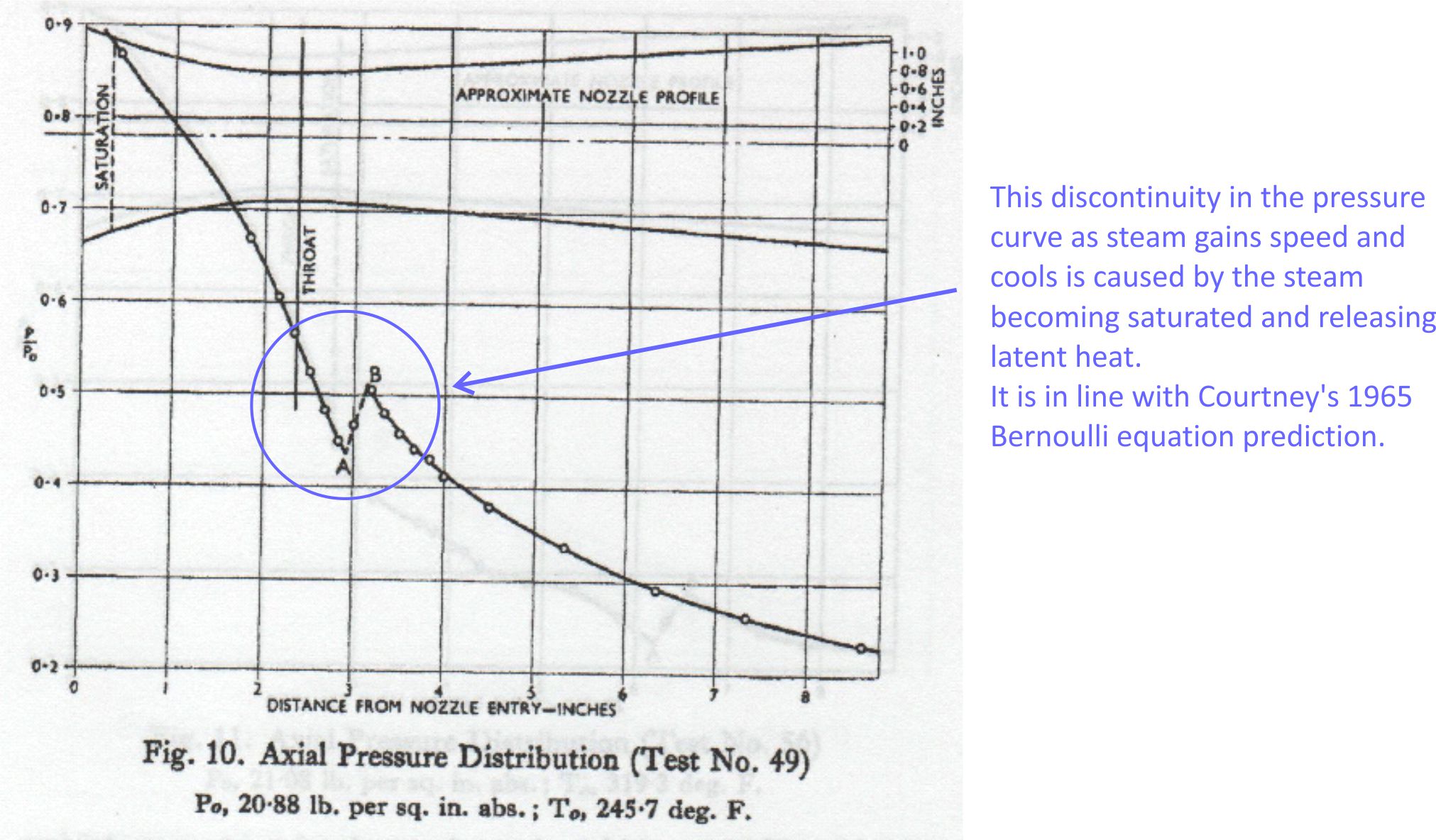
Figure 19. This graph from Binnie and Woods paper shows the variation in measured pressure as steam flows through a supersonic nozzle. As the nozzle tapers, the speed of flow increases and the steam cools to offset the gain in kinetic energy. When the steam reaches its dew point, latent heat is released, heating the steam so that its pressure rises. The only difference between this result and Courtney’s 1960s prediction is that a supersonic nozzle was used, so there is no second discontinuity in the diverging section of the nozzle.
Binnie and Woods primary interest was in solving nozzle problems and they made no reference to Bernoulli’s equation.
Bill and Dick pointed out that an excellent opportunity had been left wide open for Lancaster University to publish a high impact paper, but the researcher and her line manager squandered it.
The official records should show that the TSB moderator also urged them to take advantage of the opportunity that they had been offered. [For Freedom of Information requests to check this claim, refer to TSB Project Number 130037.]
Bill and Dick saw the publication of a paper on the Bernoulli correction term as an important step in changing attitudes about heat engines because it would get the experts thinking differently, without making a head-on attack on their long held beliefs about the low efficiency of heat engines.
Such a paper would have been newsworthy because it is rare for a two hundred year old equation that is still in common use to require a correction term. Building on this, Lancaster University could have become the hub of a new green energy research sector. [See Appendix 2 for details of Courtney’s proposed correction term.]
This is the very basic test rig that was hurriedly put together during the last few weeks of the Lancaster project.
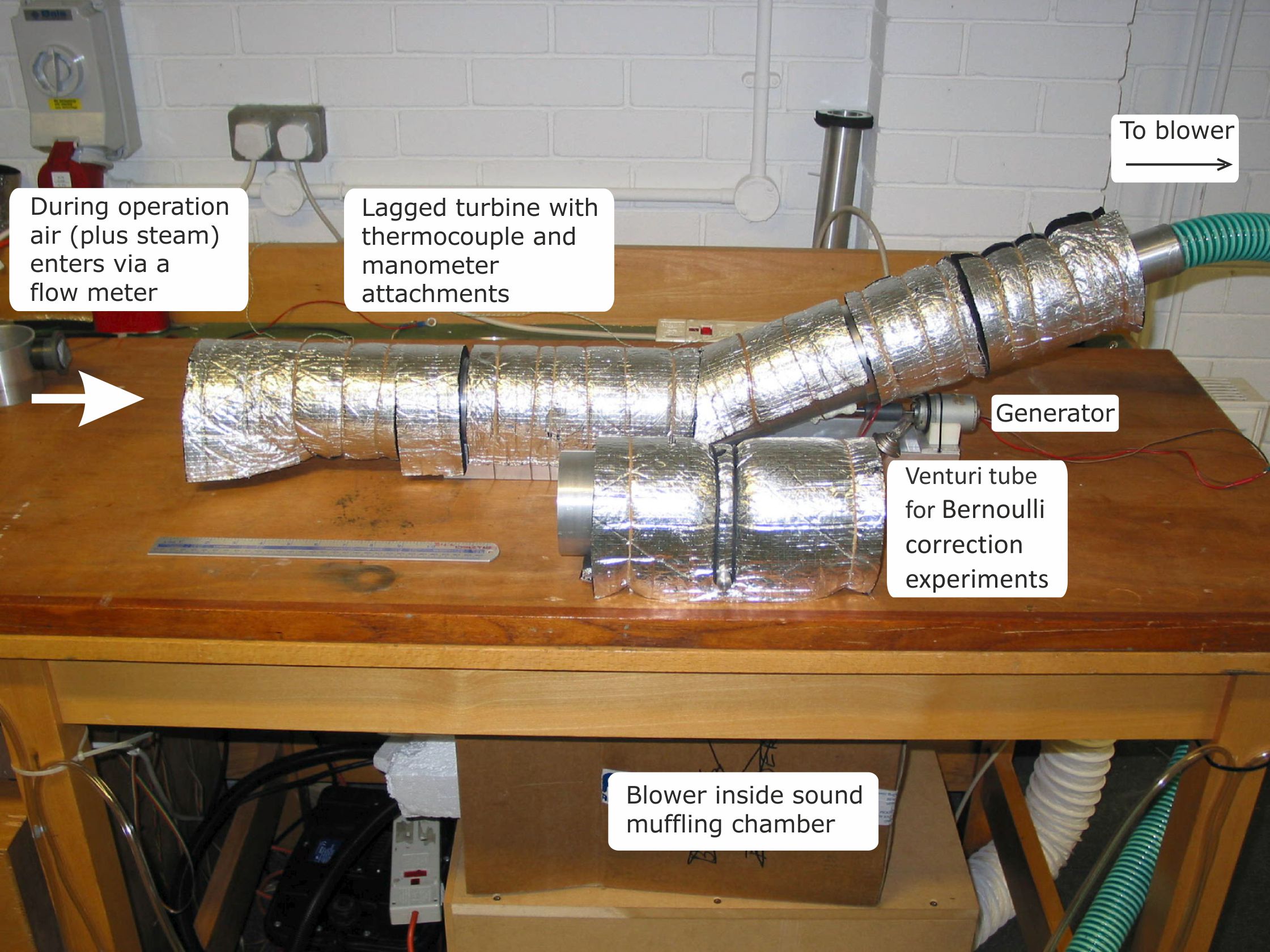
Figure 20. The Mk 1 Latent Power Turbine.
The original intention had been to build a closed loop system, but due to limited time, an open loop had to be used. Nevertheless, this rough and ready test rig provided encouraging evidence that a heat engine that mimics the thermal efficiency of a tropical hurricane can work in the laboratory. It also proved evidence that Bernoulli’s equation breaks down when a saturated vapour passes through a constriction. However, as the Technology Strategy Board records can verify (TSB Project Number: 130037), the head of the Engineering Department refused permission for the work to be published, on the grounds that insufficient data had been collected. He also withdrew the services of the undergraduate who was capable of collecting the data on the grounds that working on the project was distracting him from his studies. Admittedly, publication might have put the department in a difficult position because it risked embarrassing questions being asked about why public funds had been used to employ an undergraduate student to do post-doctorate research work.
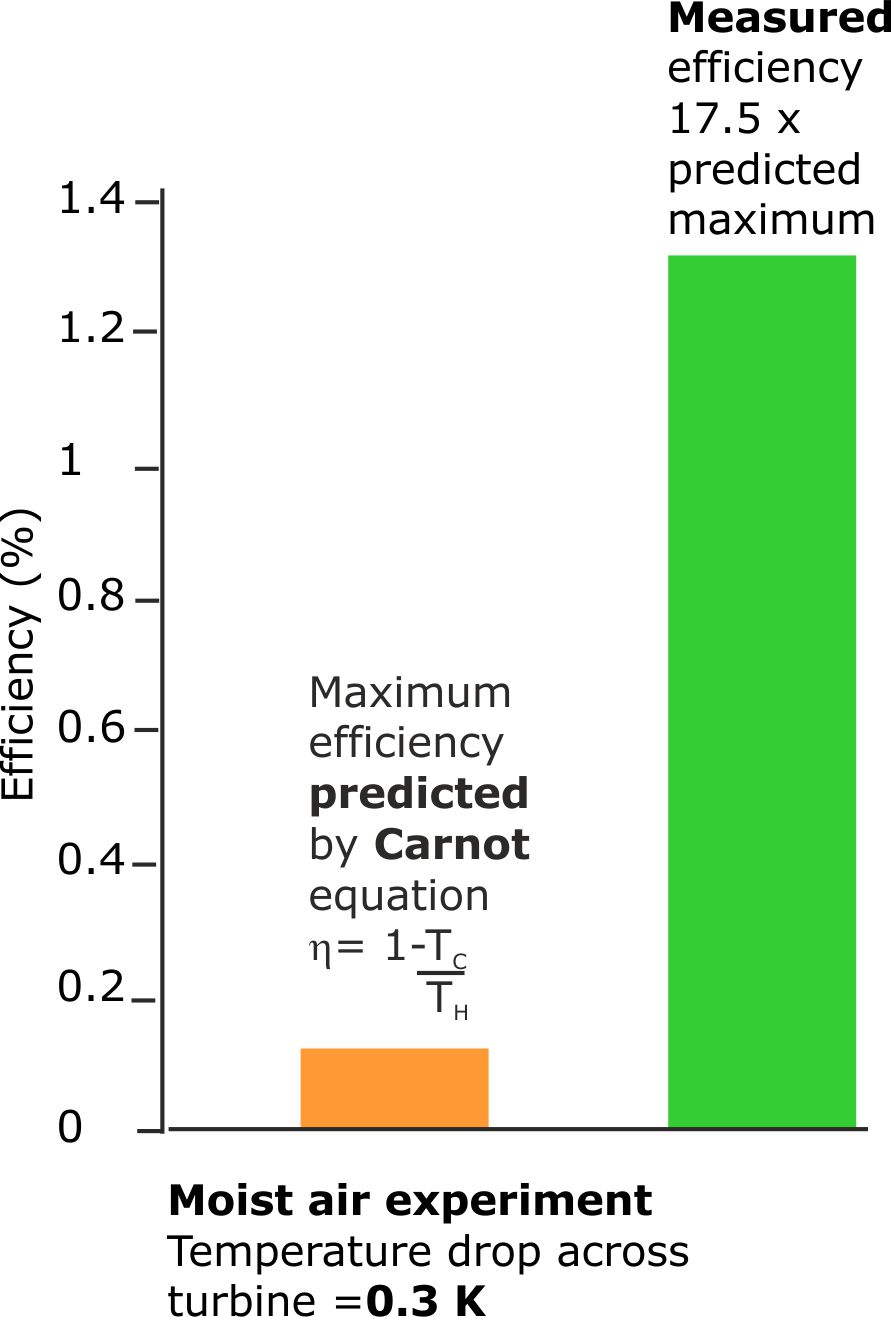
Figure 21. If this key result had been published, it would have been open to close scrutiny by academic researchers. Awkward questions would have been asked and a whole can of worms opened.
Strictly speaking, the Mk 1 Latent Power Turbine was not a pure heat engine but a heat engine that included an internal, parallel operating latent heat release mechanism.
The flow chart below was created for the Lancaster academics early on in the project. Bill’s hope was that it would inspire them by demonstrating that they were on the verge of breaking new ground in the use of the Carnot equation.
It is reproduced here because it illustrates the dangers of using the Carnot equation in the form h = 1 - TC/TH, because two different values of TC have to be used.
Thus TC ENGINE is the value of TC that has to be used to calculate a value of h that is consistent with the equation in the form h = 1 - QC/QH. But the measured exhaust temperature TC MEASURED gives the wrong answer.
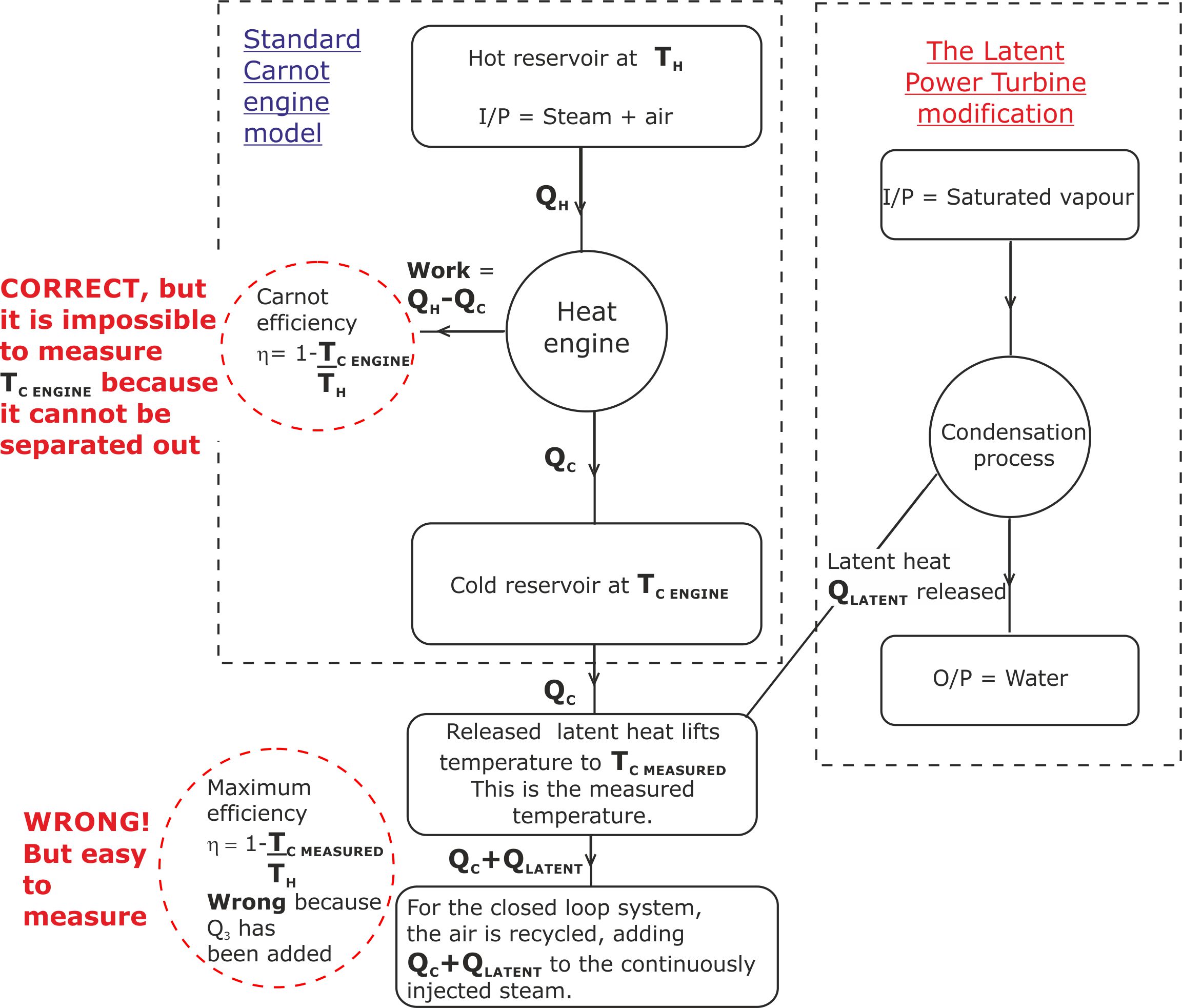
Figure 22. The heat flow chart for a proposed power generator that would have mimicked a tropical hurricane. (75% British taxpayer funding had been granted. But due to academic misbehaviour, it was never built.)
The release of latent heat inside the heat engine means that Mk1 LP Turbines (and hurricanes too) are not single step change engines with one heat input and one heat output temperature, but a long chain of microscopic heat engines, with the heat output of the first heat engine being topped up by the release of latent heat as the first water vapour molecule condenses and so on.
This explanation also means that the Great Red Spot on Jupiter that the13 year old Bill had been told was a ‘super-efficient heat engine’, was in fact just a long chain of ordinarily efficient heat engines. But it was the term ‘super-efficient’ that had impressed him at the time, and had been instrumental in giving him a unique mindset. This had enabled him to spot a textbook error on heat engines that more able students had missed.
Verifying the Lancaster research misbehaviour
Additional Freedom of Information Act evidence checks you can make
Request copies of the following:
1 Letter from Dick West to Professor Trevor McMillan, Pro-Vice-Chancellor for Research Lancaster University reminding him of Lancaster University’s contractual obligations to Latent Power Turbines Ltd (05/03/2010)
2 Letter from Dick West to Professor Joyce, head of engineering at Lancaster, complaining about the behaviour of Dr Luchinskaya and calling for her to be fired. (03/08/2010)
3 Written submission of evidence of misbehaviour from Bill Courtney to Professor Joyce and Dr Martin Widden. (06/08/2010)
Conclusion to this history so far
The development of LP Turbines and other cool running heat engines has been held up for many years by misconduct at two British universities.
The British taxpayer contributed £290,000 to the SALi ‘cash cow’ research at Manchester University and £100,000 to the clean power generation research at Lancaster University. All of this has been squandered.
The most serious misconduct occurred at Manchester University and may have cost pedestrian lives. As explained in a journal paper written by Courtney, this corruption has spread out to embrace wide sectors of the British academic science establishment.
[Courtney, W. A private researcher’s struggles against research fraud. I. A case study, Journal of Biological Physics and Chemistry 16 (2016) 142–156.]
An online copy can be accessed at
Bill Courtney’s struggle to expose the research fraud that has handicapped the fight against global warming continues to this day.
The following graph places the academic misconduct into a global warming context.

Figure 23. British academics fiddled while the Earth burned.
These temperatures changes are based on NASA data. They show how the Earth’s temperature has gradually increased while British academics have misbehaved.
Bill Courtney’s struggles to persuade the UK Research Integrity Office (UKRIO) to investigate the research fraud at Manchester University are discussed on this linked page.
His latest appeal to the chairman of the UKRIO, Professor Sir Ian Boyd (18/02/2020) made specific reference to the implication of this fraud for climate change. Even so, it was met with a blunt refusal to examine the evidence. [You can verify this for yourself by contacting Professor Boyd, email: This email address is being protected from spambots. You need JavaScript enabled to view it. ]
Meanwhile, the climate continues to heat up, with its temperature increasing by more than 1oC since Bill first looked at Jupiter through the Manchester University telescope.
In his early working life as a college physics teacher, Bill had told his students that British academic research was probably the best in the world and that they would be very privileged if they were ever lucky enough to gain a place at a British university. However, the veil fell from his eyes shortly after he enrolled as a fifty year old mature student at Manchester University in 1996. As a patriotic British scientist and proud Mancunian, he is angry that some of the present generation of academics, including a few at the highest levels, have acted selfishly. They have tolerated fraud in order to protect their own short term interests and have betrayed the high standards set by their forebears. In an attempt to help restore high standards of British research integrity, Bill has published a series of recommendations for reform in a second journal paper.
[Courtney, W. A., A private researcher’s struggles against research fraud. Part 2. II. Suggestions for reducing the fraud problem, Journal of Biological Physics and Chemistry 17 (2017) 142-156. ]
An online copy can be accessed at
The Mk 2 Latent Power Turbine
It took another four years and a good deal of shoe leather before Dick and Bill found the funding to do the Lancaster work correctly. This work was also 75% funded by the Technology Strategy Board, now rebranded as Innovate UK (Project. File number 131512)
Several changes were made and the rig design evolved significantly.
- According to the first draft of the re-design, the hurricane analogy remained, but there would be no condensation water swilling around inside the conduit. Instead, the water would condense on the outside of the conduit and the latent heat released would flow through to the interior.
This led to a further simplification in design because the heat that flowed through the conduit walls could have originated as either sensible or latent heat.
Here are the three stages in the evolution of the design.
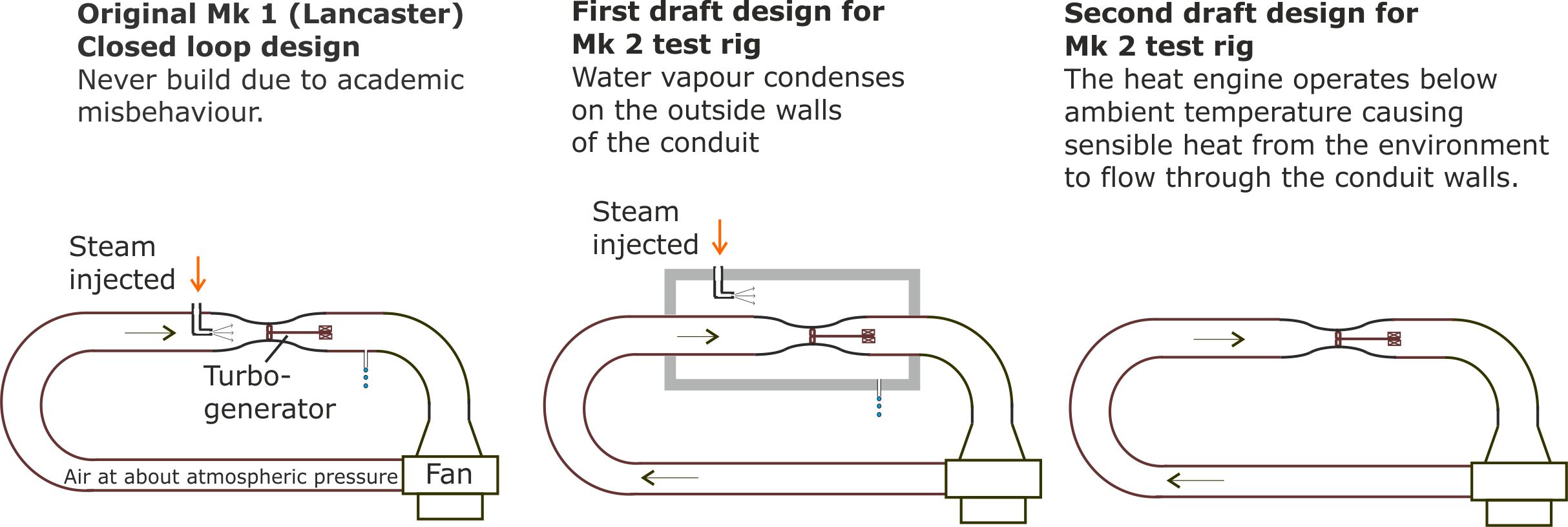
Figure 24. The original Lancaster design was messy because water condensed out inside the rig. But it had an important marketing feature: it was recognised as a logical extension of traditional heat engine designs because it ran on hot steam.
In contrast, the final Mk2 design met with widespread scepticism because the concept of a cold running heat engine is counter intuitive to engineers. Uncomplimentary comparisons were made with the 1989 Cold Fusion debacle. [https://en.wikipedia.org/wiki/Cold_fusion}
- The other marketing disadvantage of the rig was that it was not suitable for Bernoulli‘s equation experiments. [Which remain undone if anyone wishes to take up the challenge!]
Of course, the Bernoulli correction term is not needed to explain the operations of the Mk 2 LP Turbine, so anyone writing a paper on this subject will have to do this for academic reasons, rather than in the hope of pushing back the boundaries of heat engine design. - A new patent application was filed to protect the improved design. A PDF version can be accessed at http://www.cheshire-innovation.com/images/A%20pdf/Published%202014%20application%20A%20heat%20engine%20inside%20a%20mechanical%20engine.pdf
- A far larger test rig was built.
- The construction and testing work was done by a private research company; Capenhurst based C-Tech Innovation Ltd.

Figure 25. The Capenhurst test rig.
The principles of operation of the Capenhurst test rig are discussed on our introductory Latent Power Turbine page.
It was only with the benefit of hindsight that Courtney realised that his depression befuddled mind had now come full circle. The Mk 2 Latent Power Turbine was in fact a direct flow version of the alternating flow refrigerator he had invented in the 1980s.
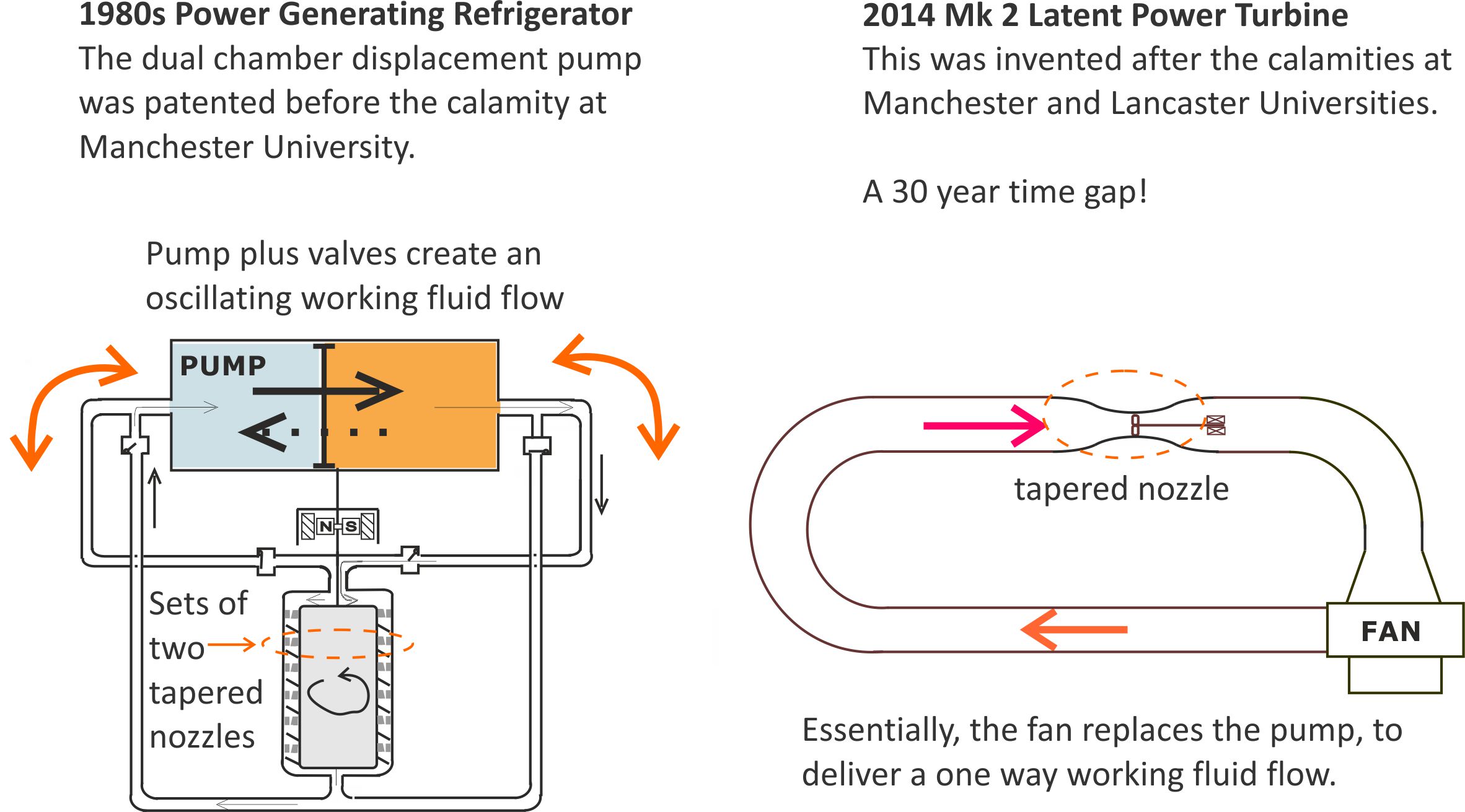
Figure 26. The key principle behind both inventions is the same. That is, the working fluid is accelerated by tapered nozzles and then obliged to do work driving a turbine. This cools the fluid below ambient temperature, allowing it to absorb heat from its surroundings.
C-Tech Innovation Ltd made a good job of building the rig but a weak link in the team led to a disappointing outcome.
The funding included provision for a university professor to design a key part of the test rig; the turbine rotor that spins to activate the electricity generator.
Unfortunately, the professor handed the work over to one of his PhD student who was specialising in wind turbines. This resulted in him delivering a turbine rotor design that depended on aerodynamic lift principles. Shortly after the contract had been paid for, it became clear that the design was inappropriate for a tapered closed loop system.
This was the problem.
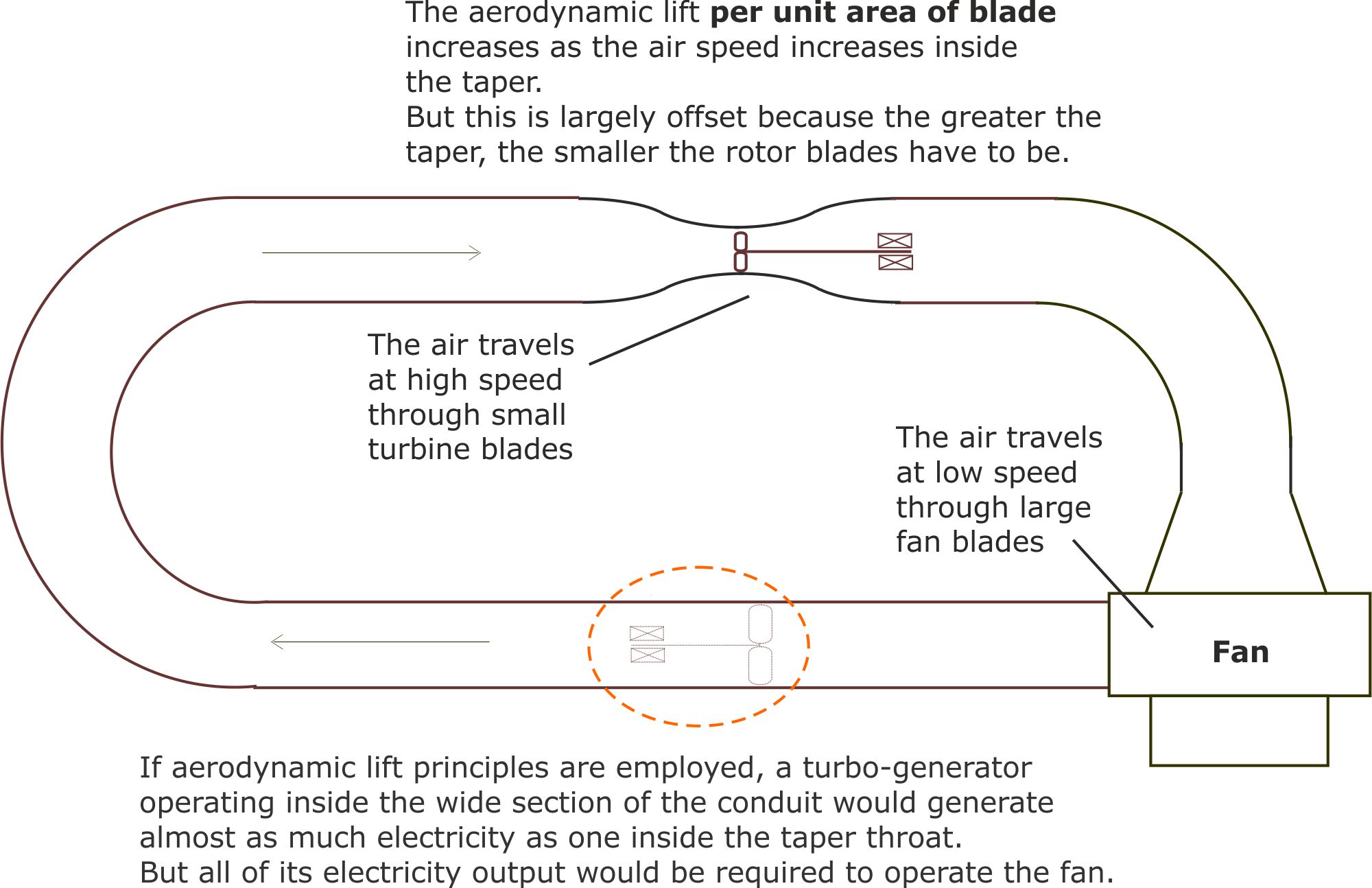
Figure 27. The limitations of aerodynamic lift only became apparent after the professor had delivered his design and it had been paid for.
Momentum transfer turbine blades as used in steam and gas turbines would not have suffered from the smaller blade problem.
In both case, the ration of power output from the generator to power input to the fan is just under n2, where n is the tapering ratio.
We explain the n2 relationship on this linked page.
There was no time or funding to commission another expert to design a momentum transfer turbine rotor that acted in the manner of steam or gas turbine rotor. So a set of cannibalised air cooling fan blades had to be trimmed and used in reverse as the rotor.
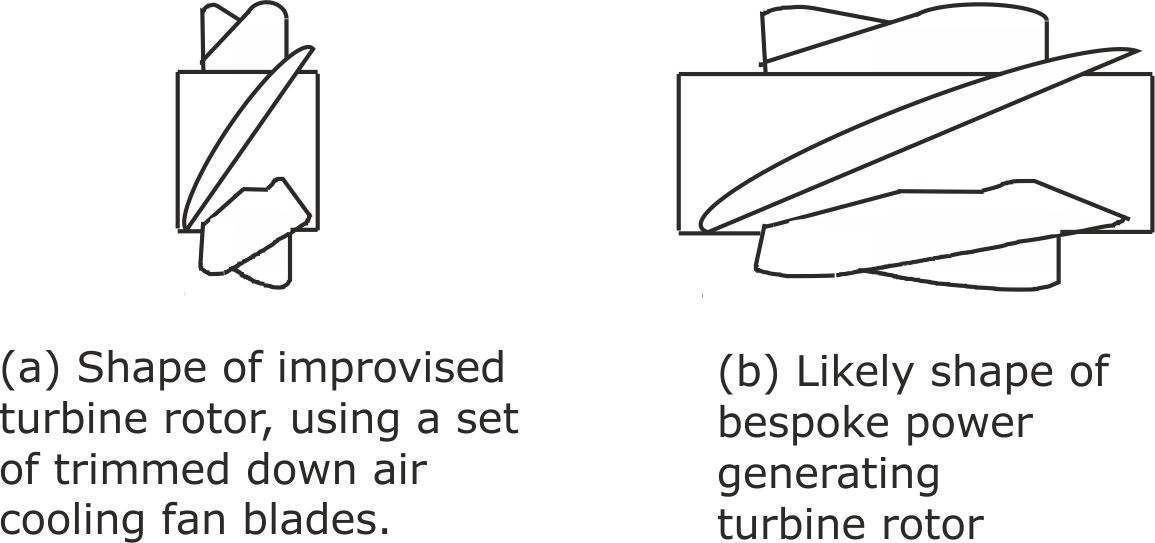
Fig .28 The improvised blades proved to be unsatisfactory, creating a massive resistance to the air flow. Even so, they still produced three times the power output predicted for the professor’s design. [For comparative test data see Innovate UK Project. File number 131512.]
In spite of this setback, all of the temperature and pressure changes around the LP Turbine loop were in line with predictions, so optimism remained. But, unfortunately, the lack of a bespoke turbine rotor meant that the project could not be completed until further funding had been obtained.
The professor made a mistake, but he had not acted unprofessionally. So to save embarrassment, his name and university will be withheld. For comparison, Bill Courtney struggled for nearly half a century before he came up with his final design. So he cannot complain about a professor committing a single error.
During the project period, Courtney was contacted by a representative of the Gdansk Engineering Institute in Poland who offered to work with LP Turbines Ltd and C-Tech Innovation Ltd. The Gdansk Engineering Institute proposed contributing a bespoke turbine rotor in a collaborator under the European Framework umbrella. Unfortunately this offer was made shortly before the UK referendum in which the UK decided to leave the European Union. Subsequently the opportunity for collaborative European funded research was lost. As a substitute, Innovate UK funding to work with the Gdansk institute was applied for. But this was rejected.
During the years of uncertainty following the Brexit decision, LP Turbines Ltd found it impossible to find partners or funding. The company eventually ran out of funds and gave their Mk 2 test rig away to Blackburn College in June 2019.
The British people made their Brexit decision in good faith. But an unintended consequence may be that Britain lost its best chance of becoming a world leader in fighting climate change.
The significance of Brexit in this story should not be over-exaggerated. Doublethink science going back to the 1880s plus a cover-up culture in British academic life played more important roles.
COP26- The Climate Change Conference in Glasgow (31 October-13 November 20221)
In the five months leading up to COP26, Bill wrote to possible conference attendees. He sent them preprint copies of his paper ‘The doublethink science of heat engines’. [Subsequently revised and published using a different title, ‘Cool running heat engines’.]
His hope was that this would alert conference delegates to the logical contradictions that were preventing clear thinking on climate change. He also offered them Latent Power Turbines as an open source power generator that all nations could exploit free of charge.
This information was sent to:
- The UK President of COP26
- All member of The Intergovernmental Panel on Climate Change (with a small number of exceptions, where email addresses were not publicly available).
- Potential representatives from the biggest polluting countries to the smallest victim countries.
- Approximately 300 potential observer delegates from around the globe. (Business leaders, university academics, climate change charities and pressure groups.)
- All listed delegates from Manchester University, UK.
- A few climate change celebrities (most were protected by gatekeepers).
He received some automated acknowledgements and several appeals for money. But otherwise, apart from a slightly ridiculing rebuttal from the COP26 Presidents advisors, there was no response.
This indifference comes in the wake of Bill Courtney and his project partner Richard West working together since 2006, trying to persuade the world to think clearly about climate change. In total, they have spent approximately 10,000 hours on their campaign.
The cumulative evidence suggests that nobody who is in any way associated with the fight against climate change is prepared to think outside their own box on how to solve the problem. So, if the experts ever acknowledge the absurdity of doublethink, it will be disingenuous for anyone to indulge in finger pointing against others.
Bill Courtney was extremely fortunate to have a concept forming experience when he learned about the Great Red Spot on Jupiter when he was 13 years old. If his knowledge of thermodynamics had progressed in the normal manner, the chances are that he would have swallowed doublethink, just like everyone else.
The ongoing doublethink problem
Since Victorian times a state of ‘doublethink’ has existed in the explanations of how natural and manufactured heat engines work. This can be seen by noting the contradictory efficient heat engine ‘rules’ believed by engineers and meteorologists.
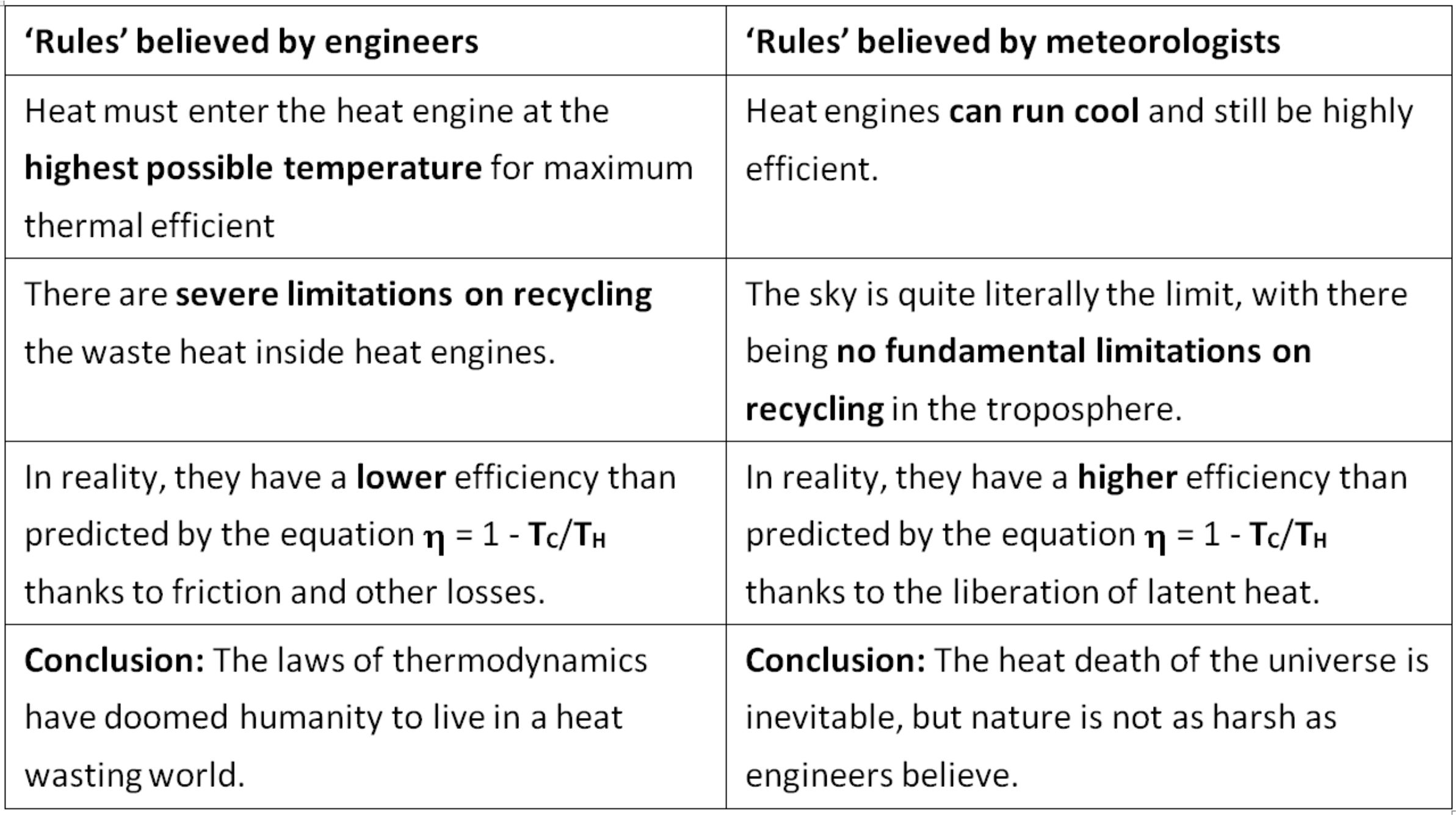
Many opportunities to develop a new class of cool running heat engines have been lost over the last half century. About half of this time has been lost due to the failures of scientists and engineers to confront ‘doublethink’ and learn from it.
The other half has been lost as a result of professional misconduct and a cover-up culture that protect the status quo of British science.
Links
How LP Turbines could change our future
Using LP Turbines to offset the jobs threats caused by automation and globalisation
Using LP Turbines to eliminate poverty in the developing world
Appendix 1
This is an extract from a draft journal paper written by Courtney and West.
They present the case for Lord Kelvin having accidently helped to create the myth that “We are doomed to live in a heat energy wasteful world”.
Extract begins
1 A common interpretation of the Carnot equation that has handicapped power generator design
A heat engine is a system for converting heat or thermal energy into mechanical energy.
This class of engines includes the steam engines used to power early railway trains, the internal combustion engines used in most modern cars and the gas and steam turbines found in the majority of electricity generating power stations.
The theoretical maximum efficiency h of a heat engine is given by the Carnot equation.
h = 1 - QC/QH
Where QH is the amount of heat absorbed from the hot reservoir and QC is the amount of heat rejected into the cold reservoir.
Measuring heat is a lot trickier than measuring temperatures, so the Carnot equation is often written in terms of Kelvin temperatures. In most cases this is justified because the Kelvin temperature scale is defined by reference to the thermal behaviour of an ideal heat engine.
h = 1 - TC/TH
Where TC is the kelvin temperature of the cold reservoir and TH is the kelvin temperature of hot reservoir.
This convenient form of the Carnot equation suggests that,
(i) In order to maximise thermal efficiency, a heat engine must operate at the highest possible temperature that its construction materials can tolerate.
(ii) Even then the maximum efficiency will be low, with the maximum efficiency of heat engine based power station systems being less than 60%
Since the 1960’s Courtney has argued that if the values of QH and QC were extended to include latent heat, then it should be possible to develop highly efficient heat engines without the need for very high temperatures. His case was based on the observation that tropical hurricanes, a natural form of heat engine, rely on the sea level release of latent heat at about 27oC; with additional latent heat being released at even lower temperatures, as the moist air rises inside the storm.
Landsea estimates that a typical tropical hurricane generates power at a rate of 6.0 x 1014 Watts [9]. This is equivalent to 200 times the world-wide electrical generating capacity. Nature’s hurricanes are too violent and unpredictable for their energy to be relied upon for generating electricity, but we can still be inspired by them.
Our own quest to break free from traditional engineering textbook thinking led to proposals for a new class of power generators. We refer to these as “Latent Power Turbines”. In the rest of this paper we will describe the evolution of the Latent Power Turbine concept. Once engineers have broken free from believing that high temperatures are necessary for high thermal efficiency, other radically different power generator designs to Latent Power Turbines may be discovered.
2 A plausible explanation of why engineers have drifted into a narrow interpretation of the Carnot equation
Engineers and scientists use the Celsius and Kelvin temperature scales as everyday work tools. However, behind their apparent simplicity lies an elegant complexity.
In principle, an indefinite number of usable temperature scales are possible, depending on the thermometric property selected to indicate the degree of hotness, the fixed points and the number of degree intervals between the fixed points. Two of the most import scales are the ideal gas and thermodynamic temperature scales. Lord Kelvin was seminal in developing an important working relationship between these two scales. He proposed that the ideal gas scale should be used as the primary scale for thermometer calibration purposes because real gases converge on the behaviour of an ideal gas, as the gas pressure tends to zero. This has lead to today’s Kelvin temperature scale which uses absolute zero and the triple point of water as its two fundamental fixed points. Kelvin also proposed that temperature scales should be based on the efficiencies of a chain of ideal heat engines because such scales would be fundamentally independent of the properties of any particular substance. Kelvin was also aware that that the efficiency of a Carnot type engine using an ideal gas as the working substance is given by
Efficiency, h = 1 - qC/qH where qH and qC are the input and output temperatures respectively [10].
This means that for routine calculation purposes, the ideal gas and thermodynamic scales are interchangeable, provided that the same fixed points are used.
This flexibility works both ways. That is, for an ideal gas Carnot engine, the Carnot efficiency equation can be written in two different forms.
(i) h = 1 - QC / QH
(i) h = 1 - TC/ TH
Establishing the equivalence of the heat and temperature versions of the Carnot equation for the specific case where an ideal gas is used as the working fluid does not entitle us to extend this equivalence to all forms of heat engine. A study of the literature written for the general reader suggests that this limitation has been forgotten. For example an article in New Scientist dismisses the possibility of using a 20oC temperature difference between the loft and cellar of a house for power generation on the grounds that the Carnot equation verifies that this will not work [11]. However, if the author had taken into account the latent heat stored in humid summer air in the loft, they could have come to a different conclusion
We conclude that the Carnot equation written in its original form as h = 1 - QC/QH must always be true by definition. But when written as h = 1 - TC/TH it is only true if the thermometric fluid involved is an ideal gas or some other substance that does not suffer a phase change inside the engine. For example it is not true for tropical hurricanes or other weather phenomenon which involve phase changes of water.
Meteorologists are well aware of this limitation. But engineers wresting with challenging heat engine designs may be tempted to simply their problems by adopting the temperature version of the equation.
Perhaps the most seductive feature of the Kelvin version of the Carnot equation is that has encouraged engineers to build heat engines with ever higher temperature hot reservoirs (TH) at the cost of ignoring the potential of cool running heat engines.
Appendix 2 - a correction term for Bernoulli’s equation
Background note
Bernoulli’s equation (alternatively referred to as Bernoulli’s principle), states that for an incompressible, non-viscous fluid undergoing steady flow, the pressure (p) plus the kinetic energy per unit volume (½ x density, r x velocity, v2) plus the potential energy per unit volume (density, r x acceleration due to gravity, g x height h) is constant at all points on a streamline [3].
Thus,
p + ½rv2+ rgh = constant
This equation is dimensionally correct but baffling because it suggests that the sum of two types of energy (potential and kinetic) plus pressure (which is not a form of energy) is always a constant
In November 1965 a spectacular example of Bernoulli’s equation hit the British headlines when three of the eight cooling towers at Ferrybridge power station collapsed during a gale [https://rmets.onlinelibrary.wiley.com/doi/abs/10.1002/j.1477-8696.1967.tb02927.x]. Gusting 136 km/hour winds were funnelled between the cooling towers so that wind speeds and pressures suffered large changes over short distances. As a consequence, vortices developed which ripped three towers apart. Courtney was intrigued by this incident and made an informal study of it. He came to the conclusion that the mechanical work done in destroying the towers ultimately came at the cost of a drop in the internal energy of the wind. For an incompressible fluid, its pressure p would vary in proportion to its internal energy, allowing p to be used to represent internal energy in Bernoulli’s equation.
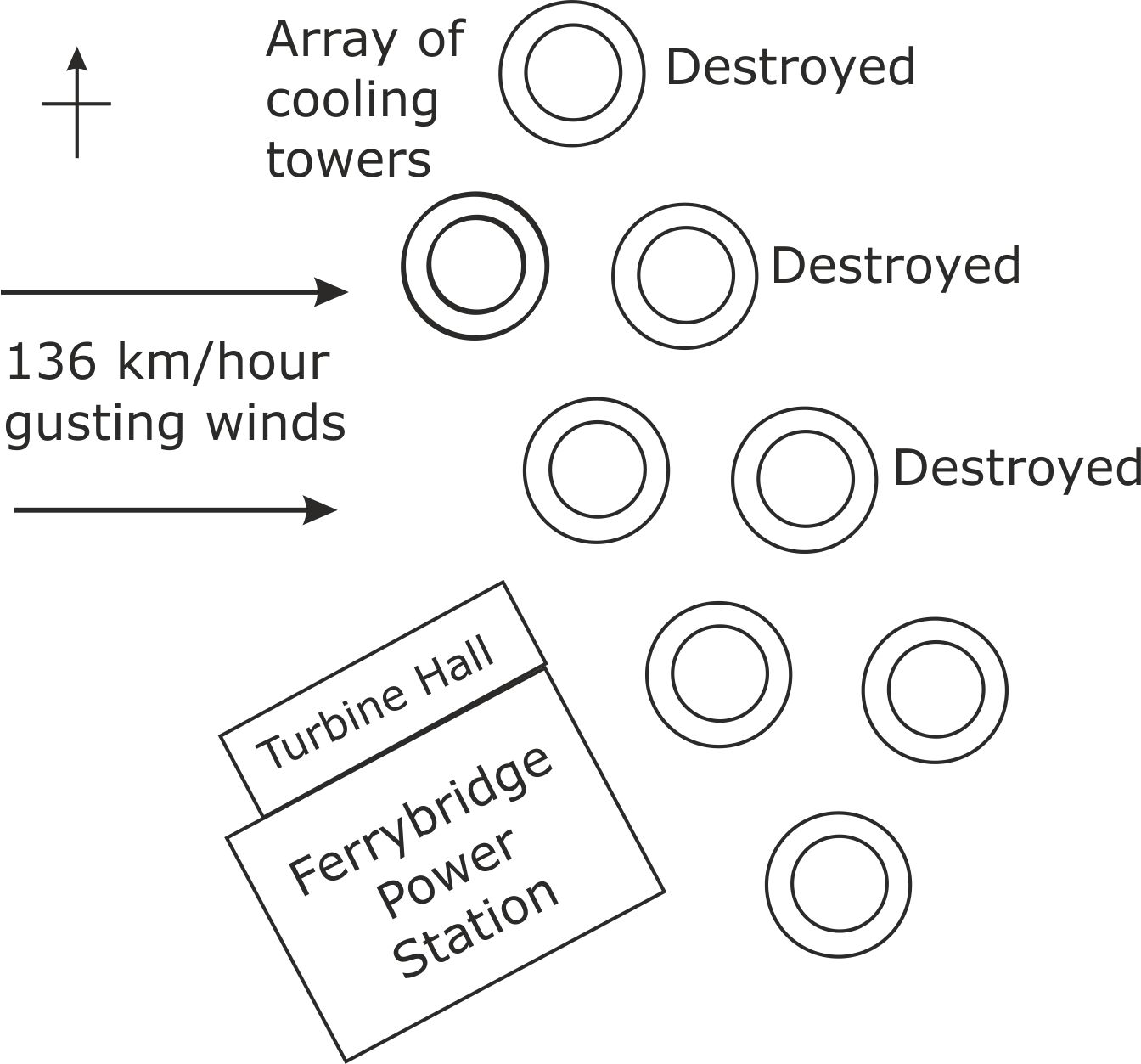
Fig .A1. The collapse of the Ferrybridge power station cooling towers.
[The distribution of the cooling towers bears a similarity with the elastomeric beads in SALi as illustrated in Figure 11 above. This is not coincidence because the Ferrybridge incident was at the back of Courtney’s mind when he invented SALi in 1986.]
As far as Bill Courtney can make out from his discussions with scientists and engineers over the last 55 years, this deeper truth appears to have gone unrecognised. This may explain why the need for Bernoulli’s equation to include a correction term for fluid phase change has gone unnoticed for three centuries.
This is a second extract from the same paper
3.1 Our proposal for a correction term for Bernoulli’s equation
Changes in the static air pressure when a flow of dry air passes through a converging-diverging section of a conduit can be calculated using Bernoulli’s equation. Strictly speaking this equation applies to incompressible fluid flows, but prolonged engineering usage testifies that it can be applied with a fair degree of accuracy to compressible air.
Bernoulli’s equation states that for an incompressible, non-viscous fluid undergoing steady flow, the pressure (p) plus the kinetic energy per unit volume (½ x density,r x velocity, v2) plus the potential energy per unit volume (density ,r x acceleration due to gravity, g x height h) is constant at all points on a streamline.
Thus,
p + ½rv2 + rgh = A constant
We predicted that this equation can be verified in experiments where dry air is passed through a converging-diverging conduit but will require a correction term for use with moist air.
This is our argument.

Figure A3. The tendency of moist air to cool on passing through a converging section of conduit will result in the production of small condensation droplets and the release of latent heat. Consequently, the temperature and pressure drops will be reduced compared with the flow of dry air under similar conditions. On passing through the diverging section, the latent heat processes are reversed, with heat being absorbed as the water droplets evaporate.
In order to produce an equation that allows for the release of latent heat, an additional term dQl /dV needs to be added. The term dQL /dV represents the latent heat lost/gained per unit volume of static fluid. Thus the generalised form of Bernoulli’s equation is
p + ½rv2 + rgh - dQL /dV = A constant
Volume is a rather awkward term to handle in flow conditions but has to be used as part of the correction term, to ensure dimensional consistency.
When condensation occurs and latent heat is liberated, the minus sign is retained in front of the latent heat term. A positive sign is used if evaporation occurs and latent heat is absorbed.
Our literature search did not reveal any references to a Bernoulli equation correction term for latent heat. But several authors including Segletes and Walters [13] made reference to a correction term for sensible heat. We corresponded with the authors of this paper, who considered our arguments to be valid. They went further, by offering suggestions on how our correction was consistent with Van der Waals equation relating to inter-molecular forces. We also uncovered experimental evidence that supported the need for a correction term, but the researchers had different research priorities and made no reference to the Bernoulli equation.
This 1937 work by Binnie et. al [14, 15].was concerned with throttling high speed steam flows. Their results show that if the steam becomes saturated on throttling, then there is a sudden increase in static pressure. This is in line with our proposed correction term.
THANK YOU
Two school friends who helped Bill develop his insights
Kevin
Kevin Roberts introduced him to astronomy, meteorology and mountaineering. Mountain climbing enabled him to learn from physical experience that air temperature falls with increasing gravitational potential energy. Standing on the edge of windy precipices and having the counter-intuitive experience of being drawn towards the wind also gave him a physical experience of Bernoulli's principle.
Andrew
During many walks home from school, Andrew Ciesielski stimulated Bill’s interest in chemistry, the history, sociology and philosophy of science. He also entertained Bill with tales about scientific misbehaviour and mischievous rivalry that prepared Bill mentally for the academic misbehaviour he later encountered.
